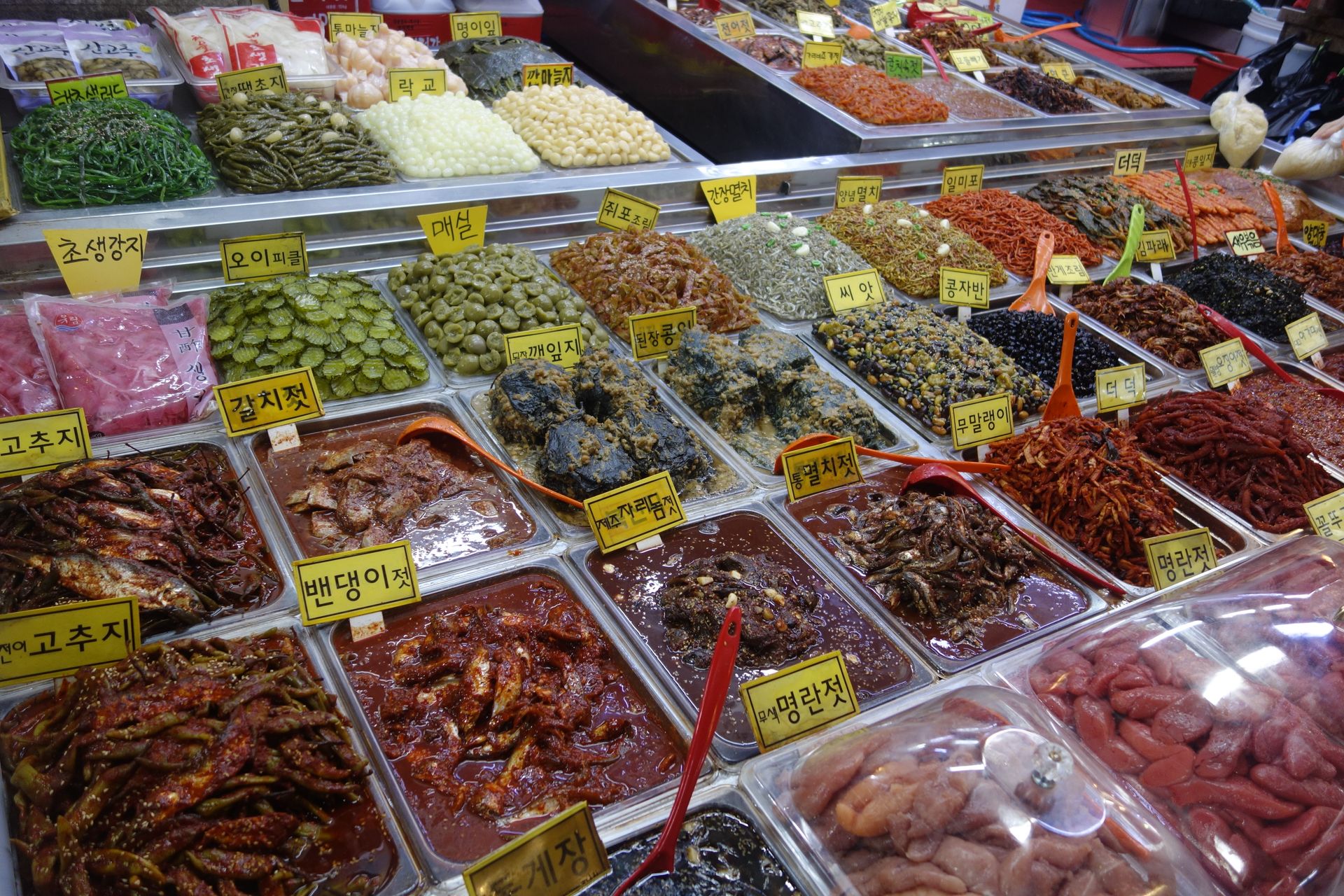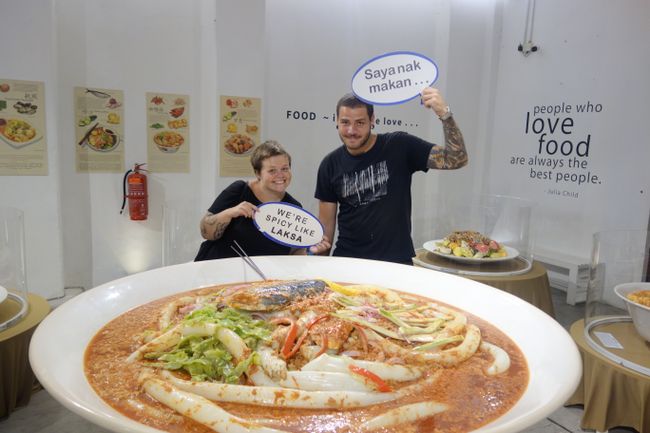Eating in Korea
MIVOAKA: 03.11.2019
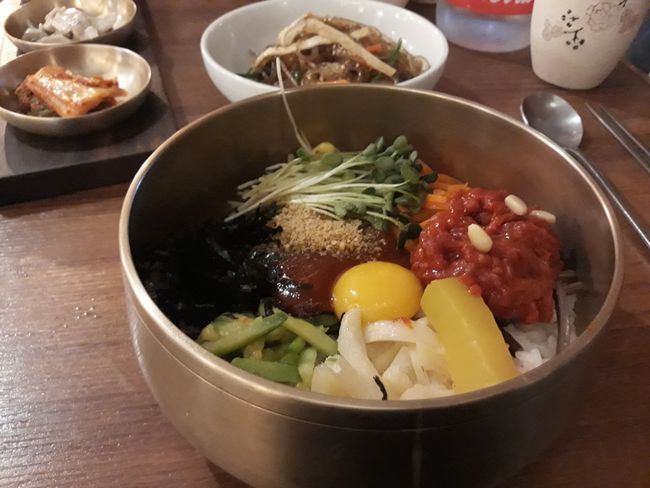
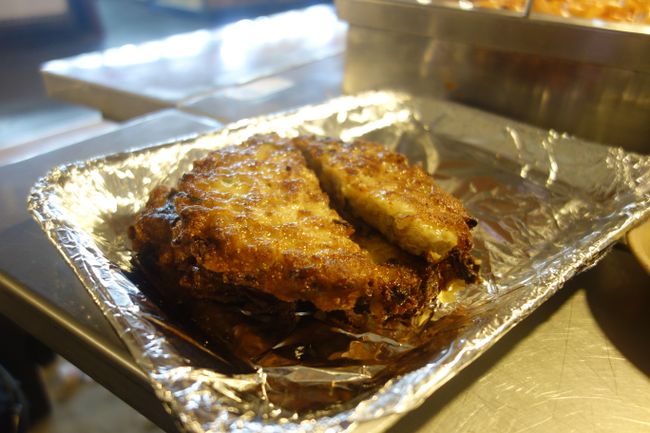
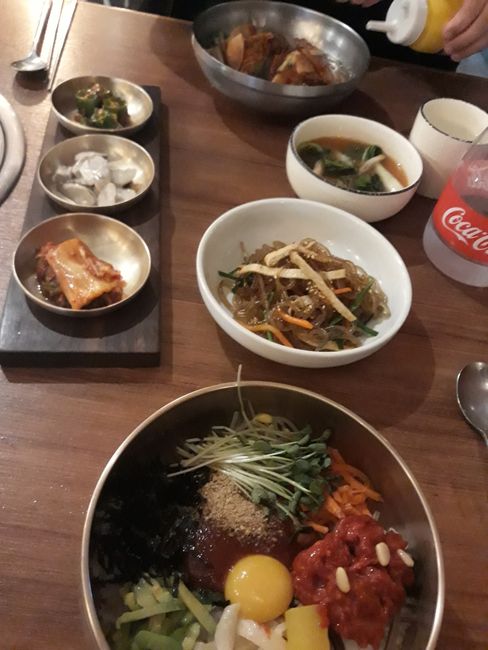
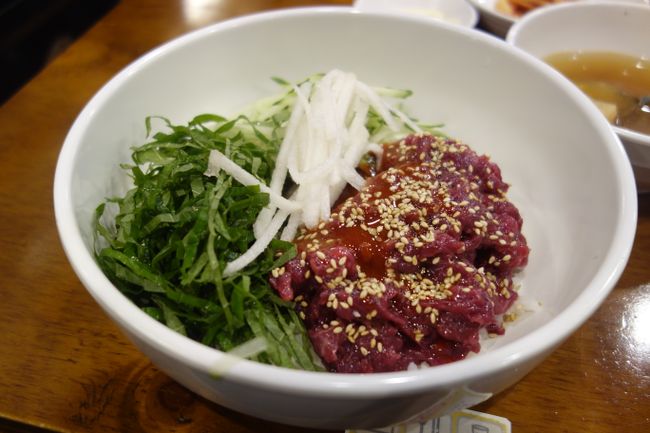
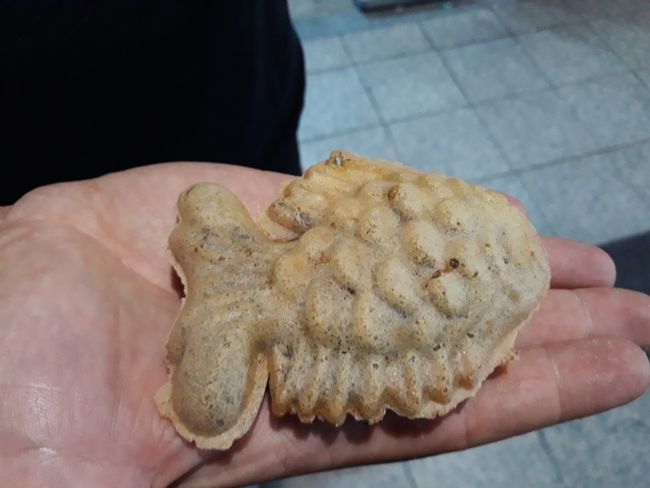
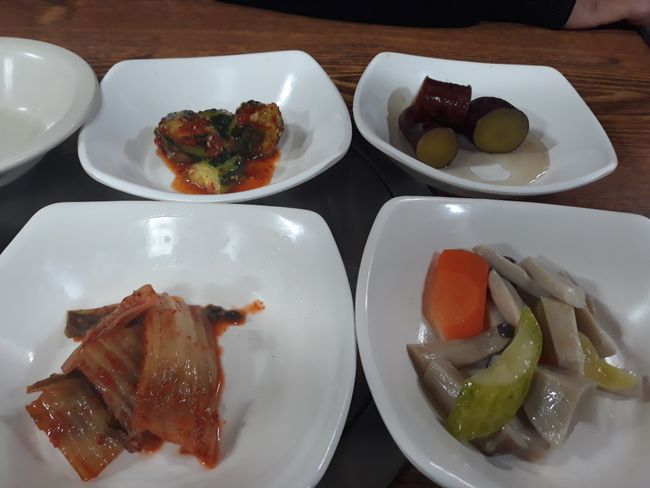
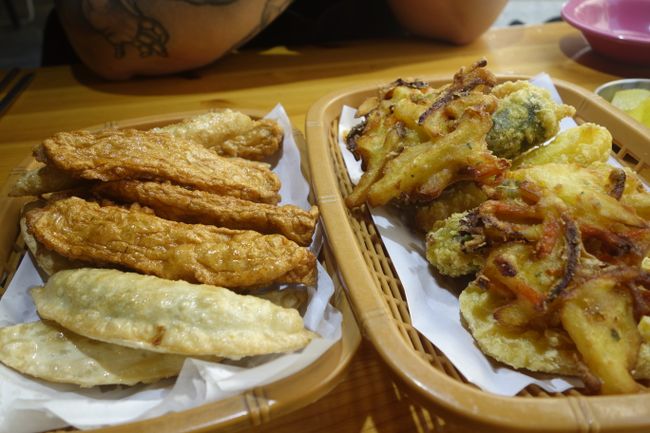
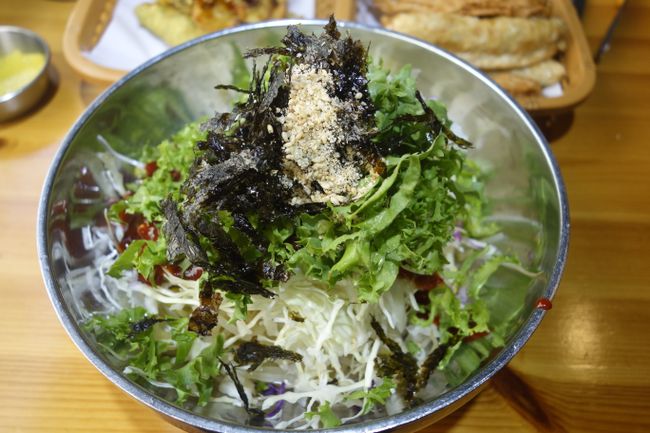
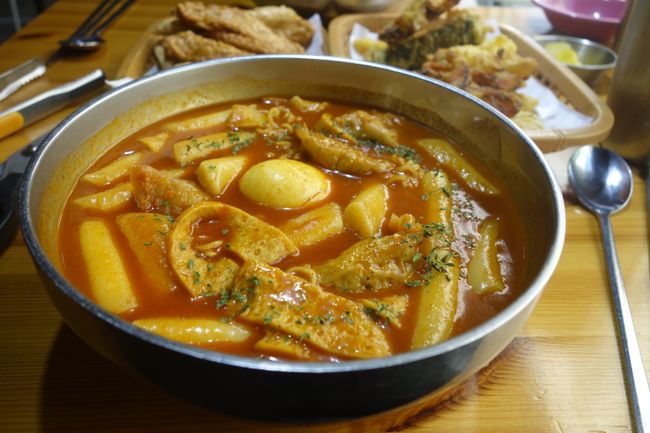
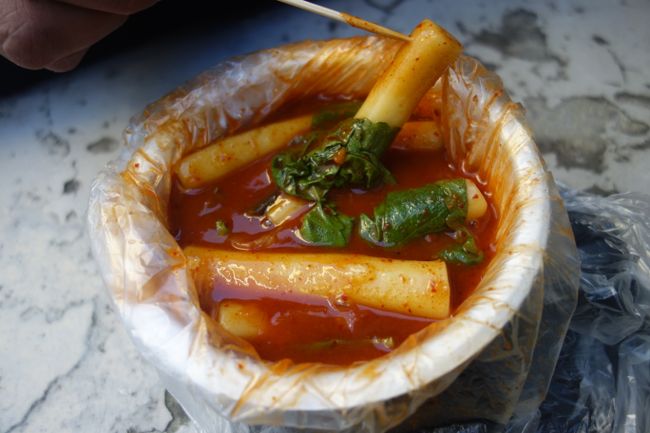
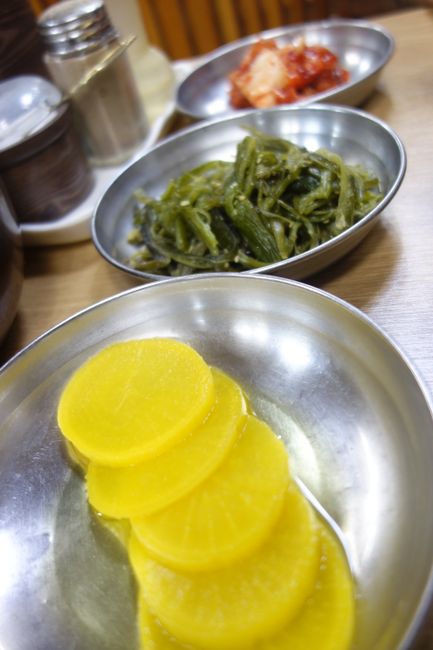
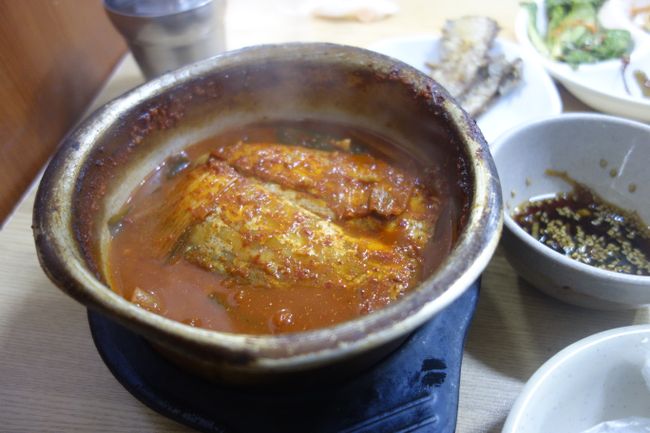
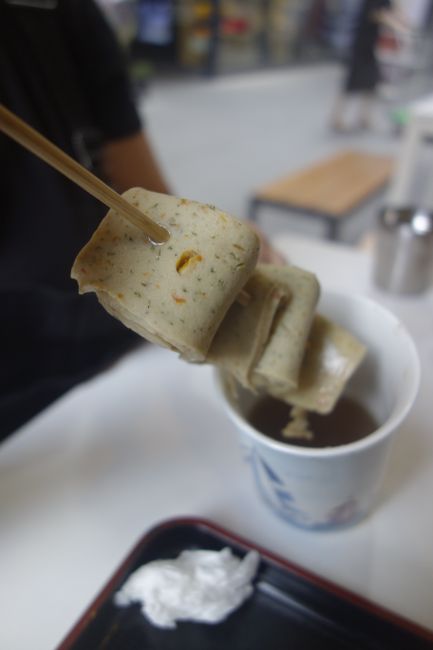
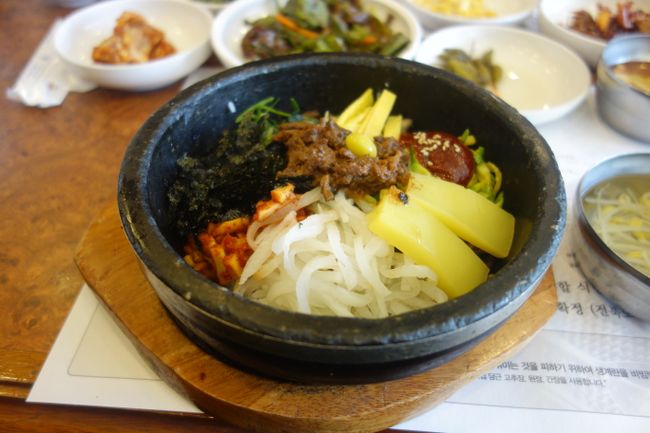
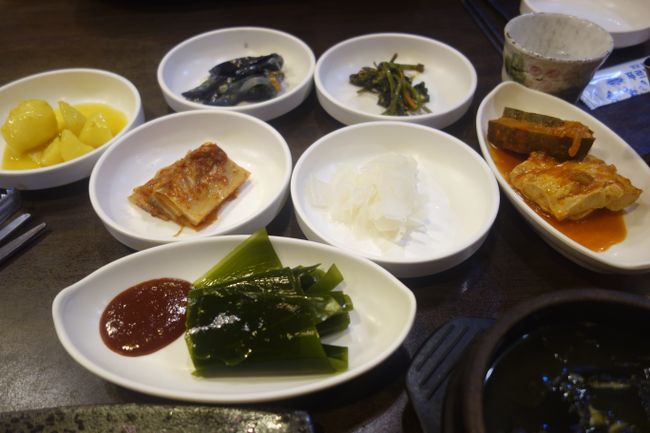
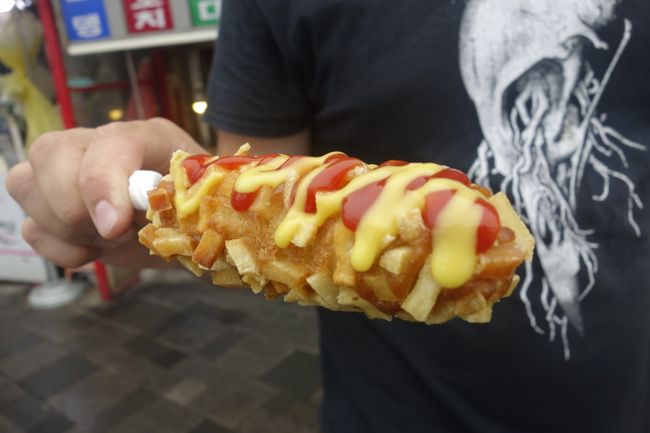
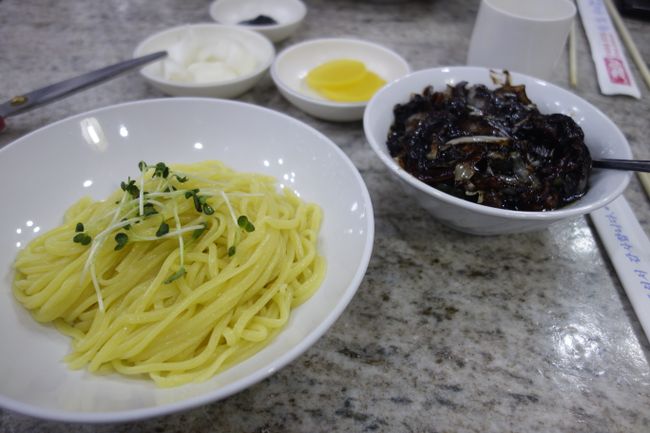
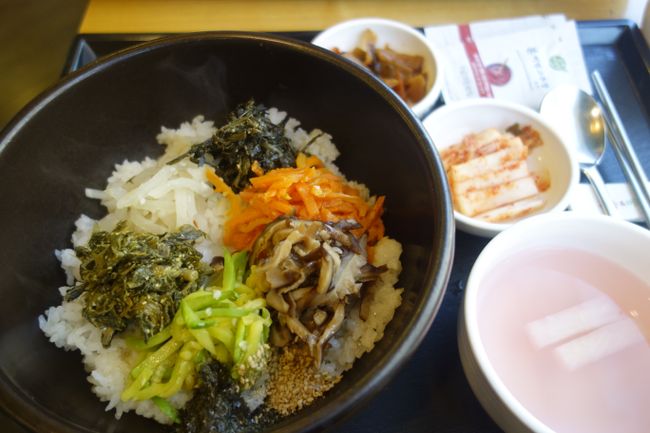
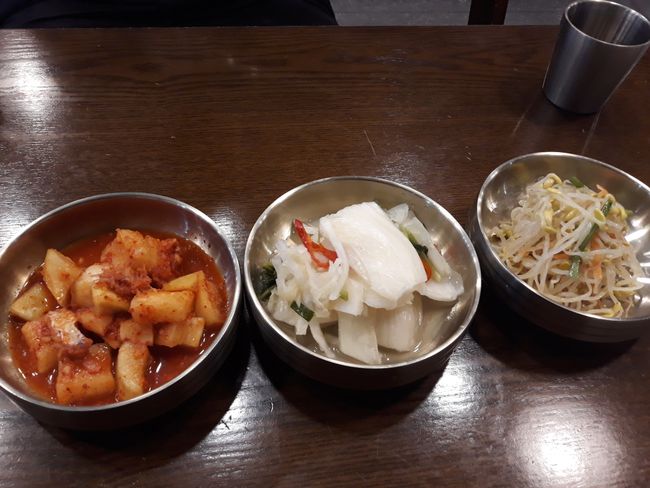
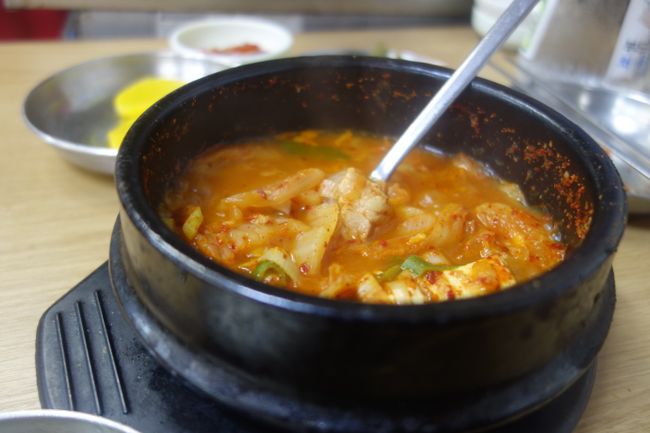
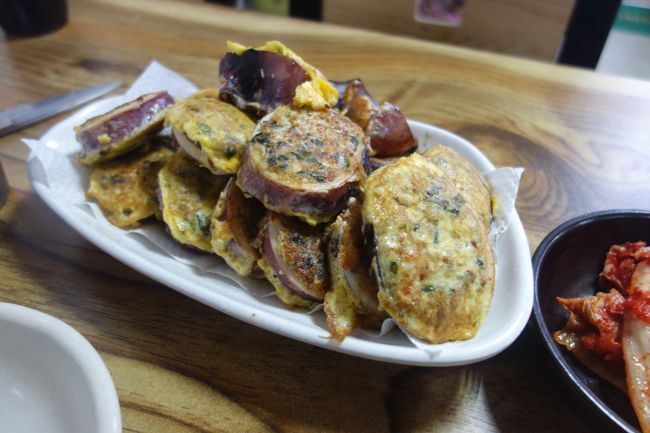
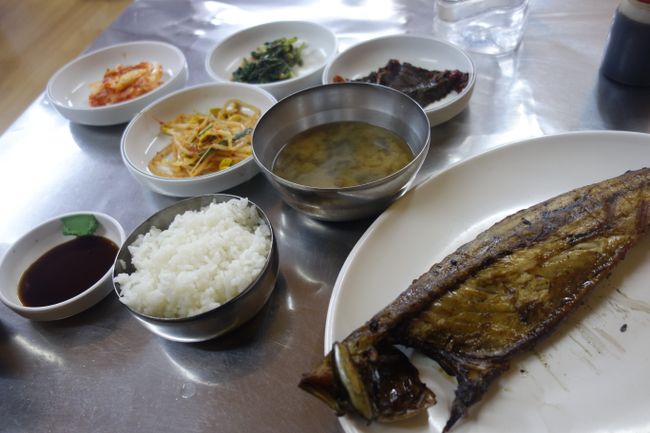
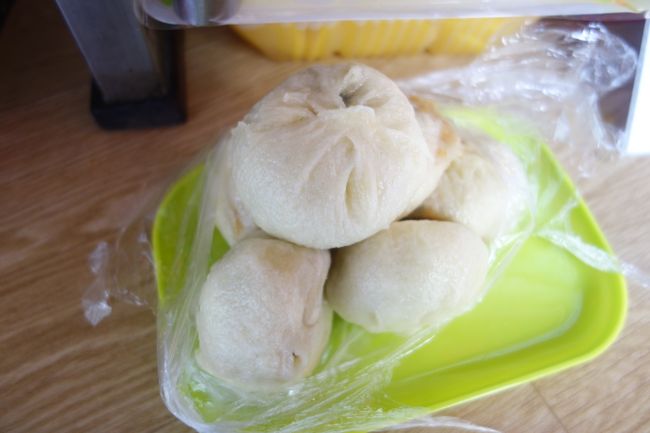
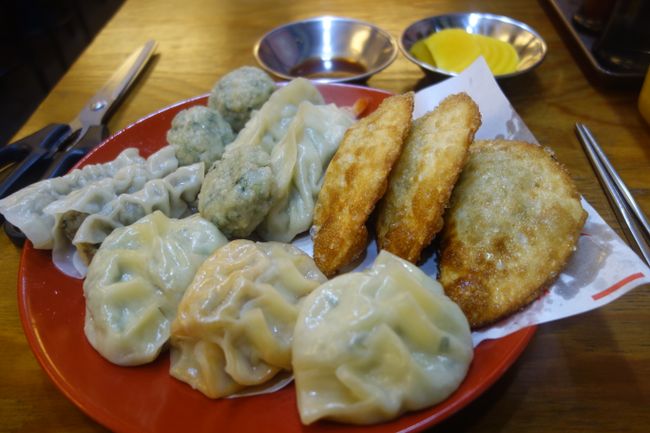
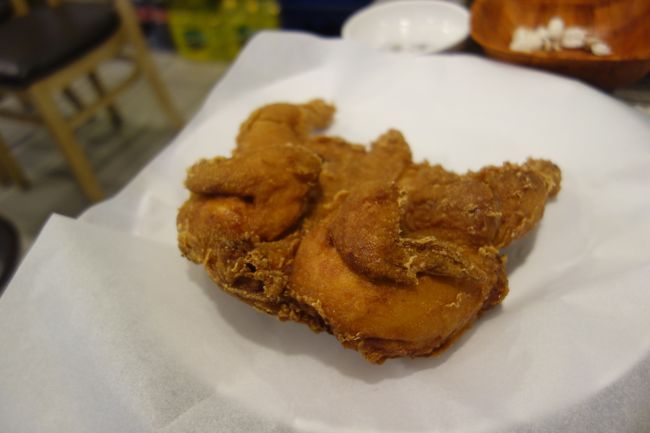
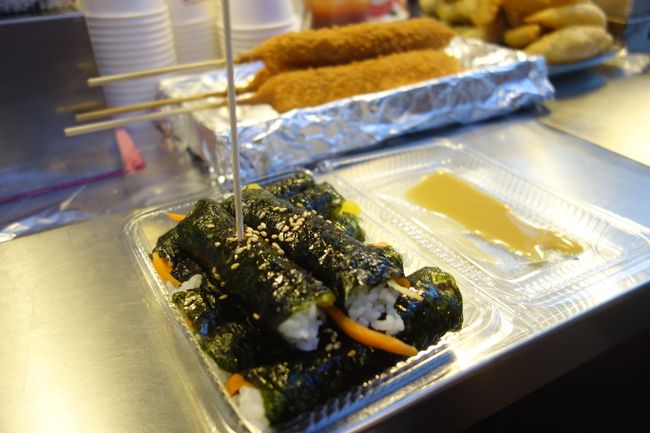
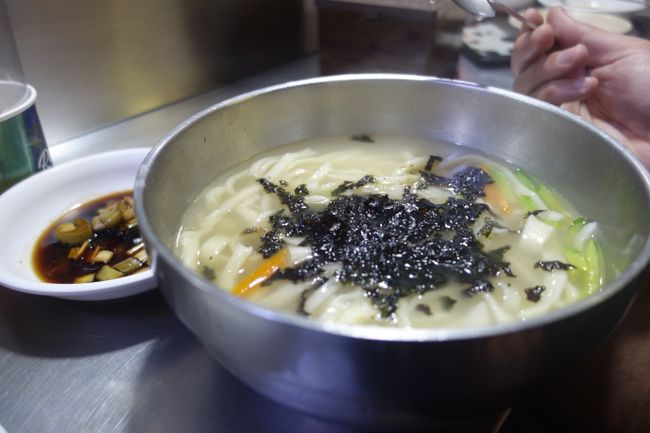
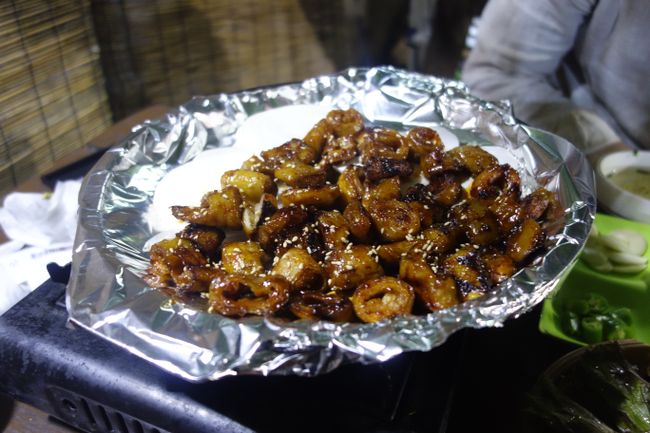
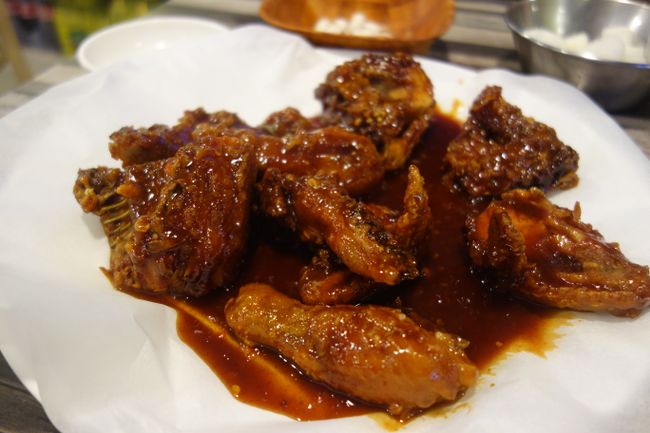
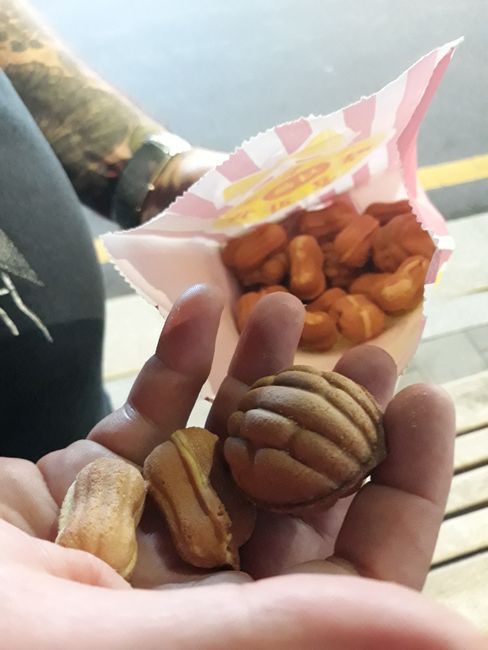
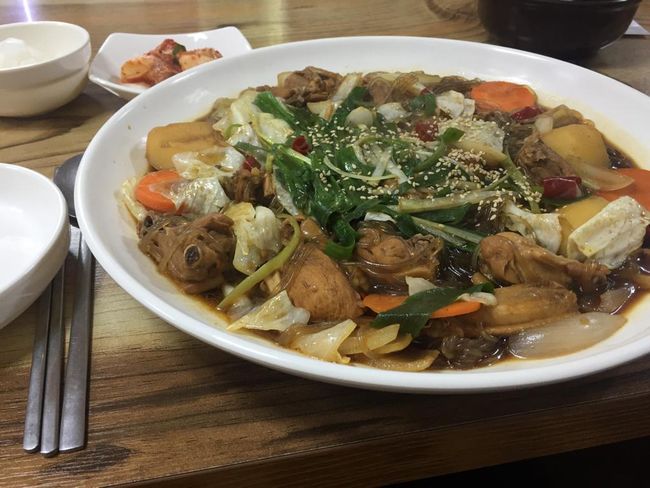
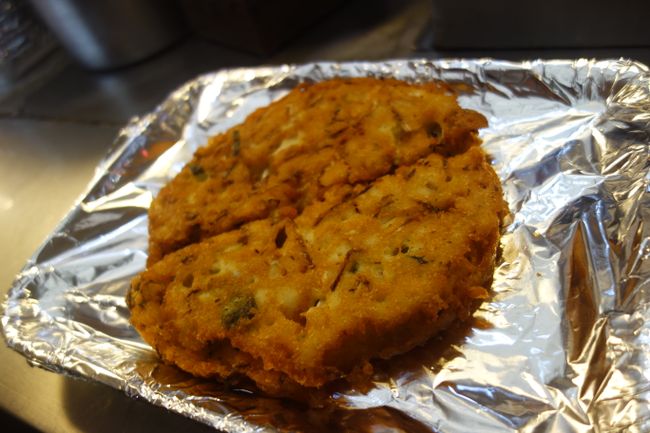
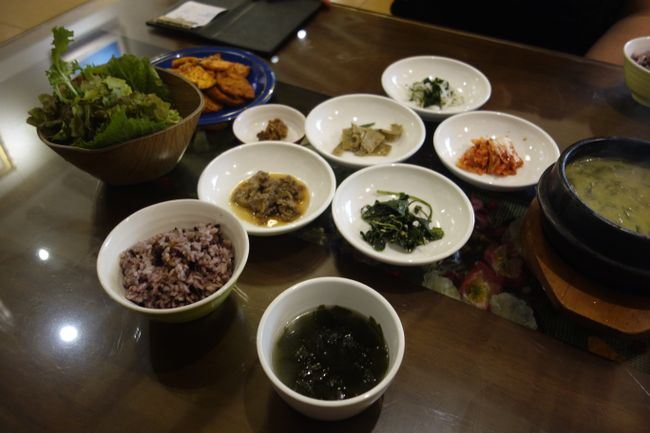
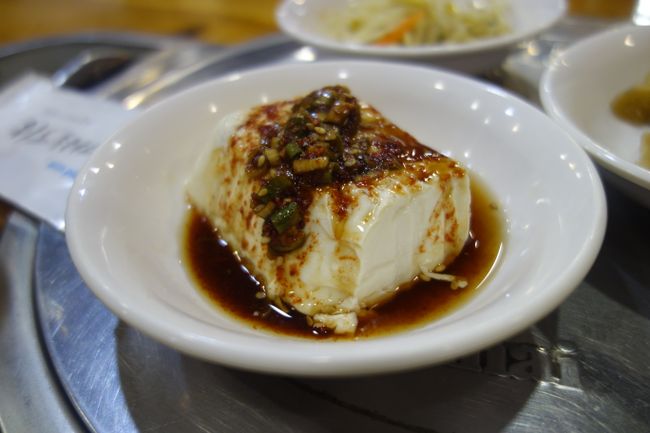
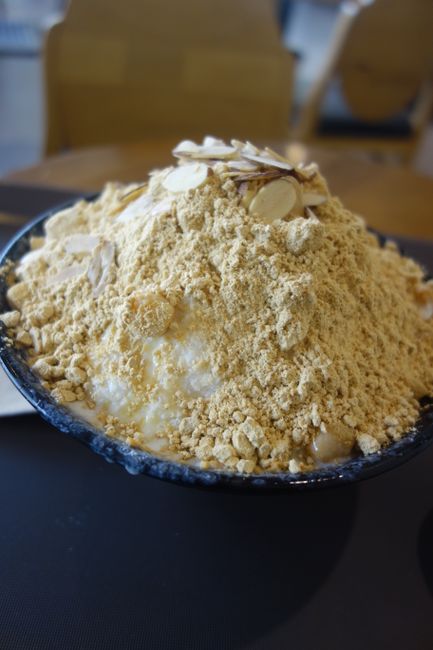
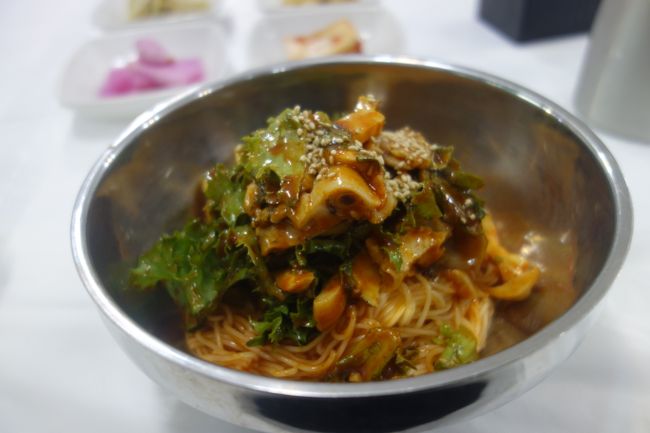
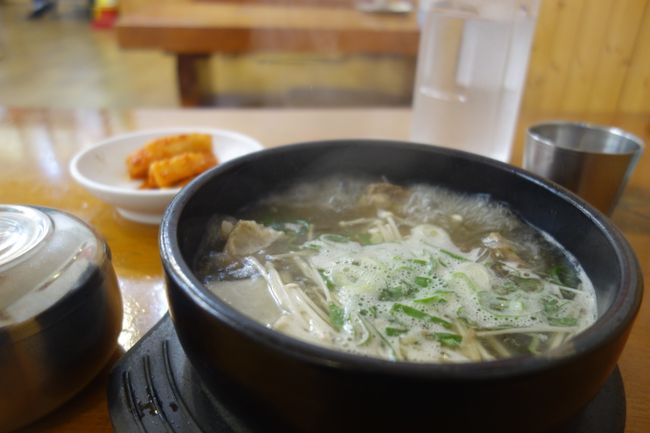
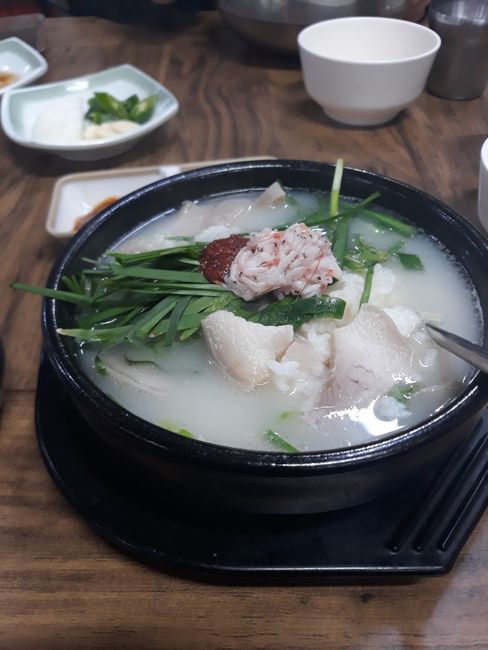
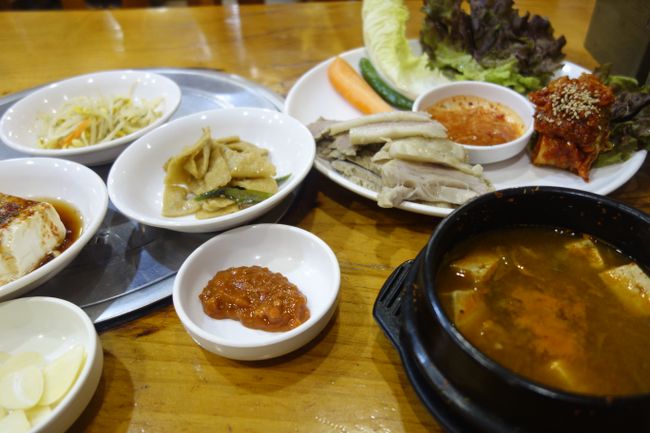
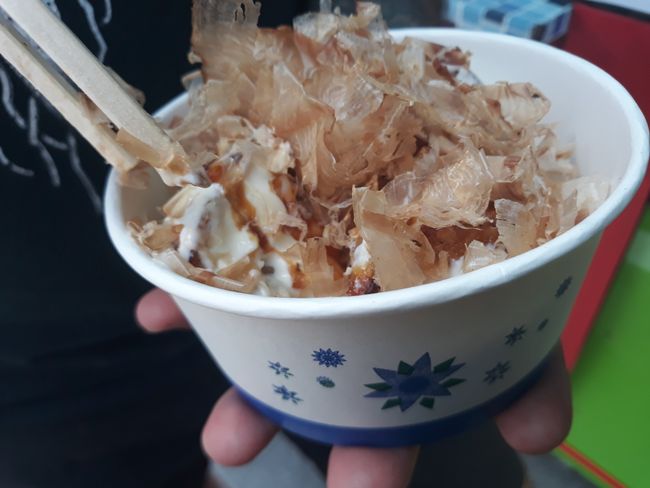
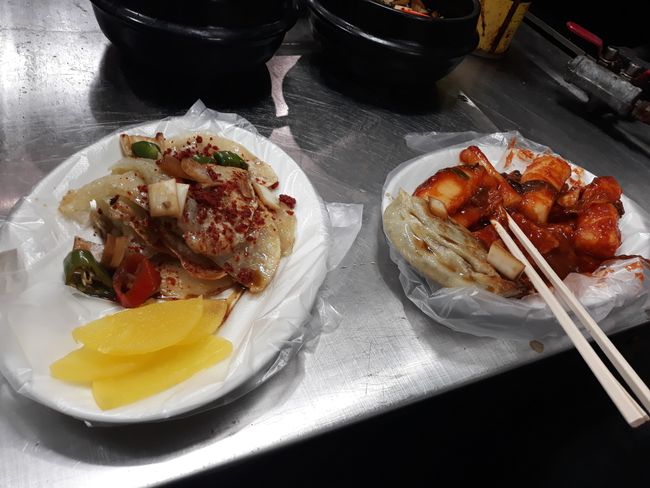
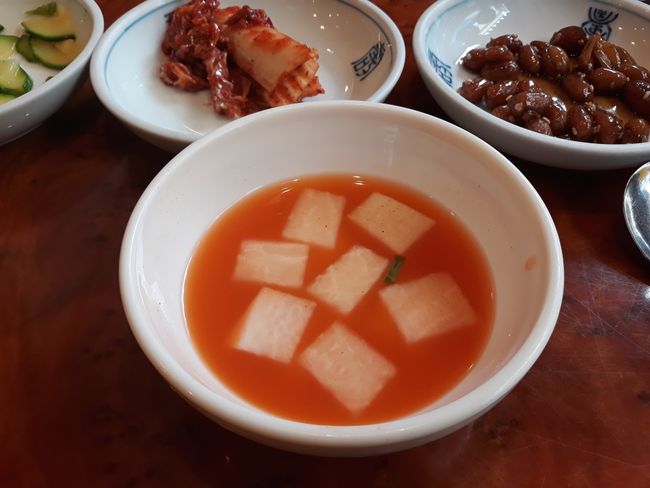
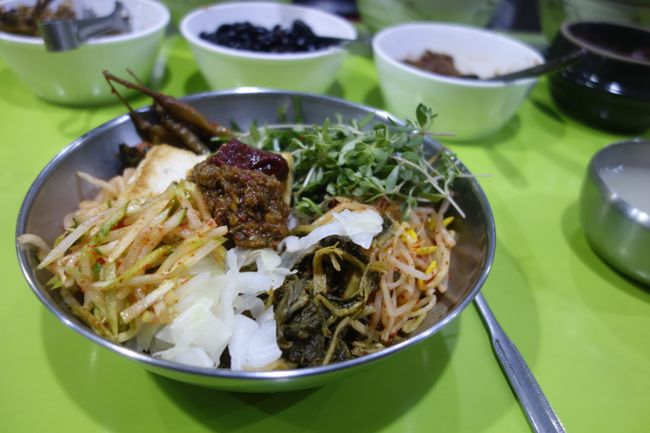
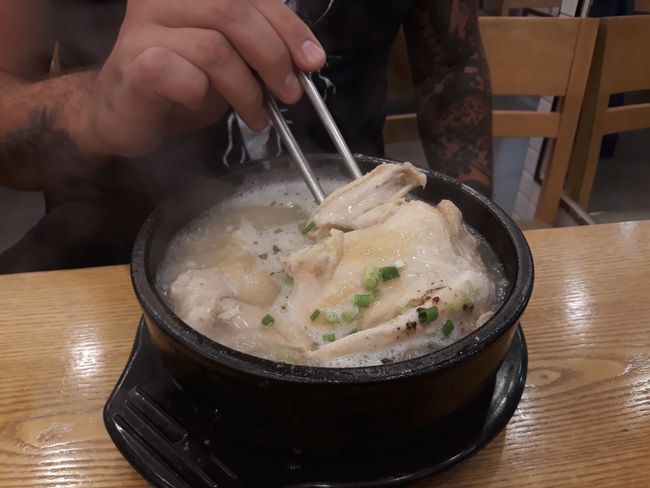
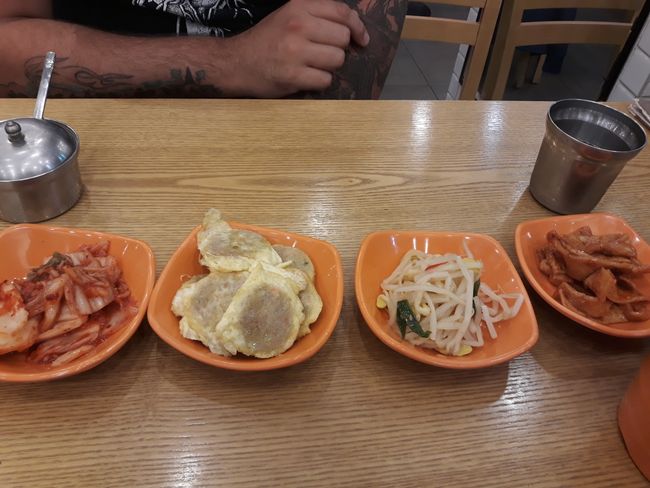
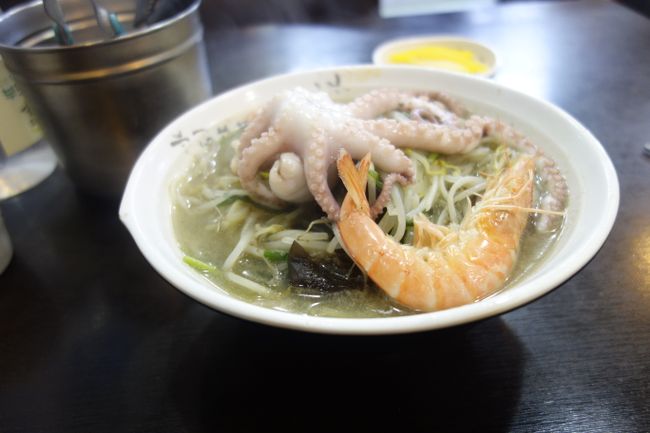
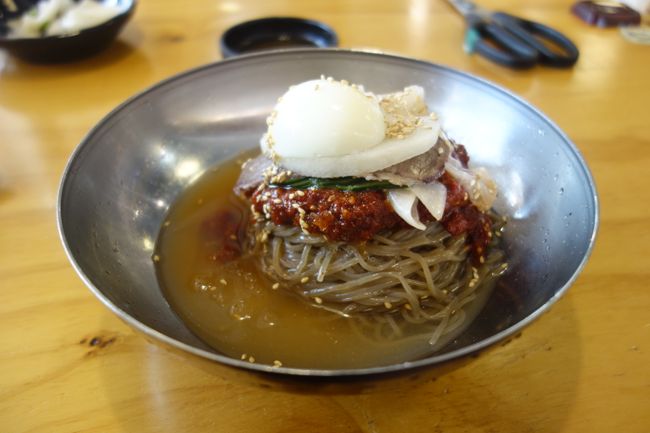
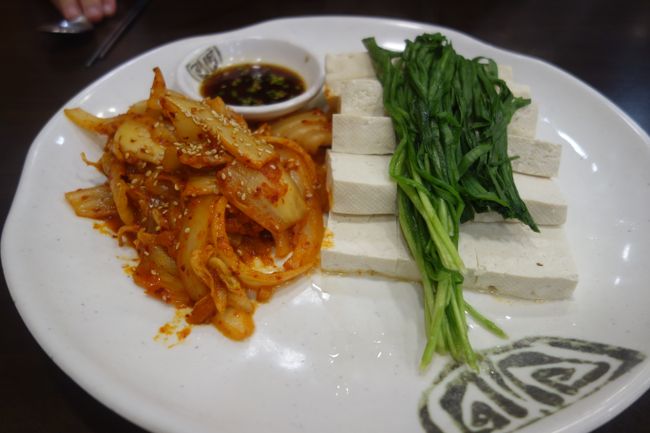
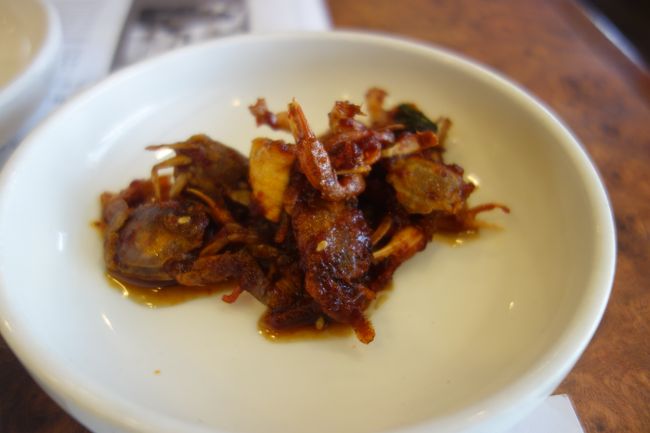
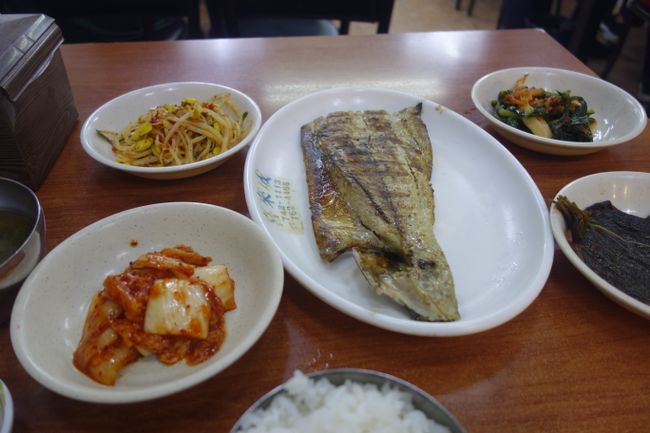
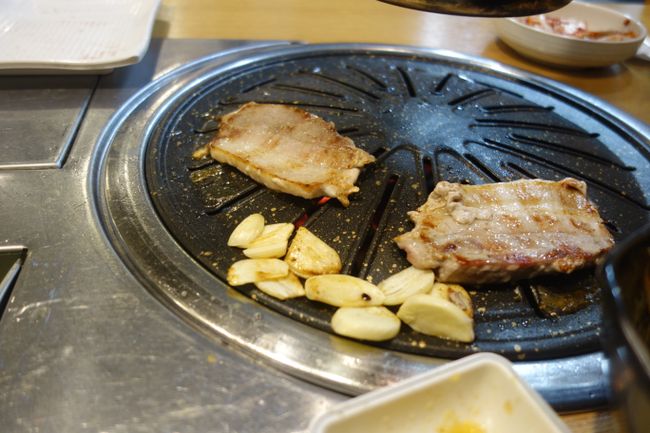
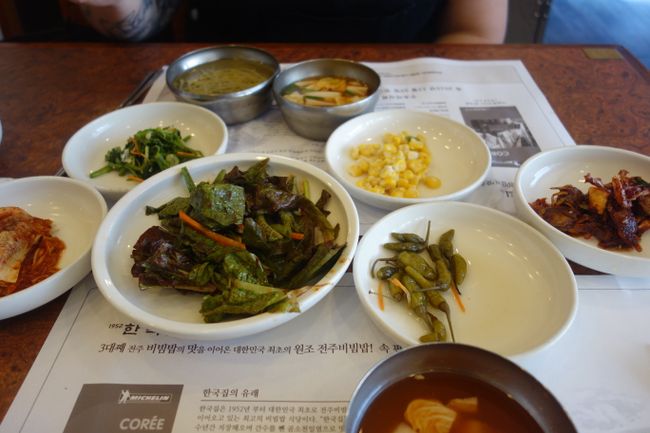
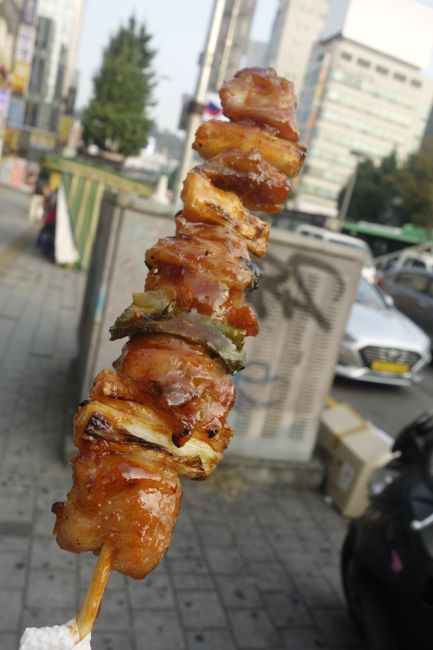
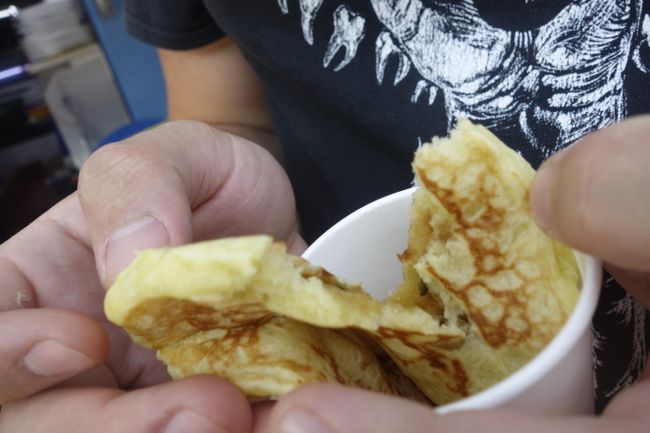
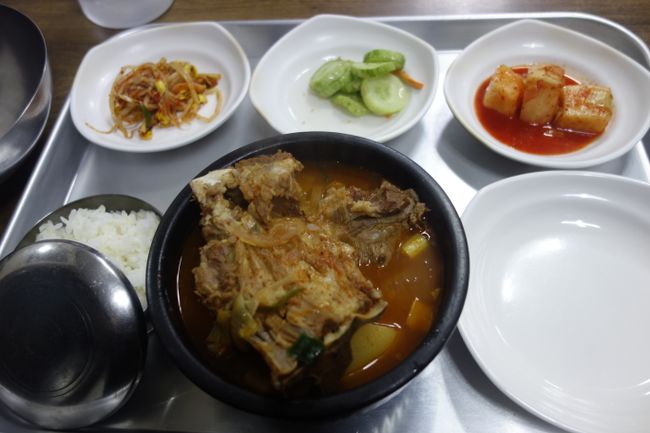
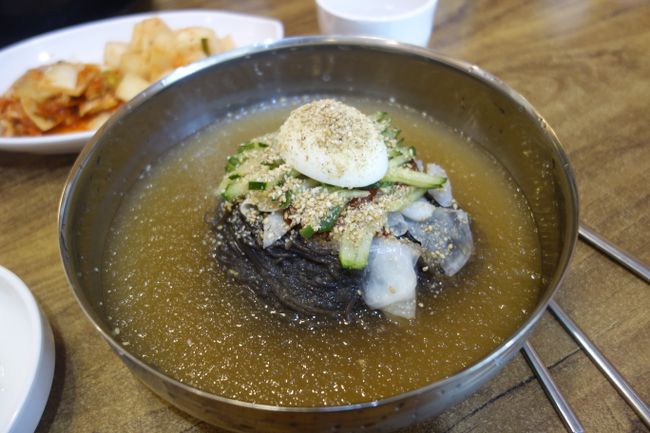
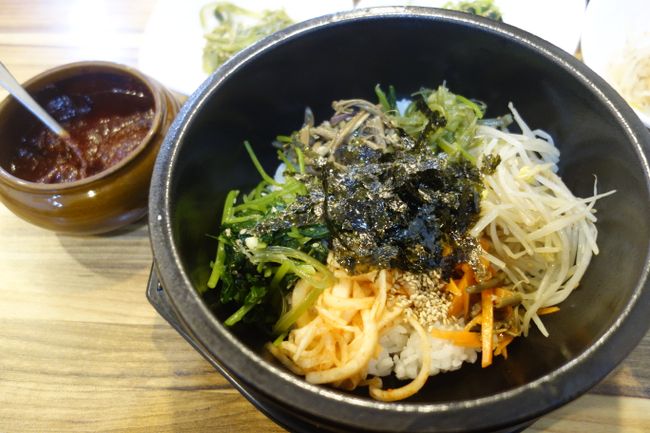
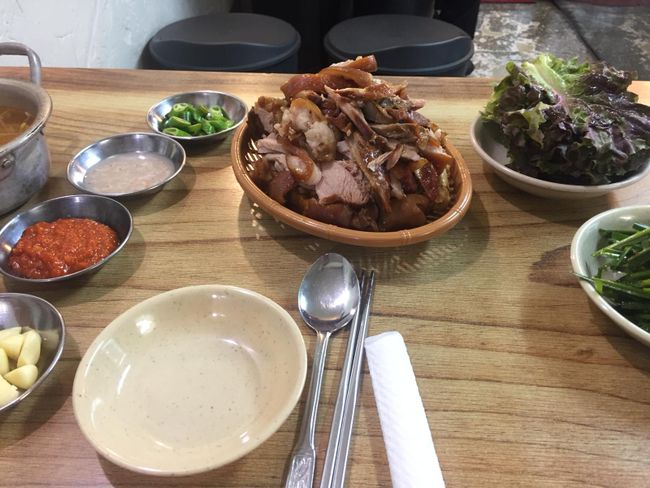
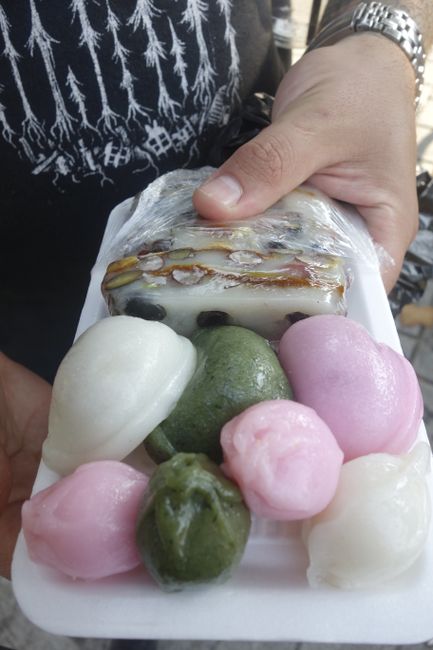
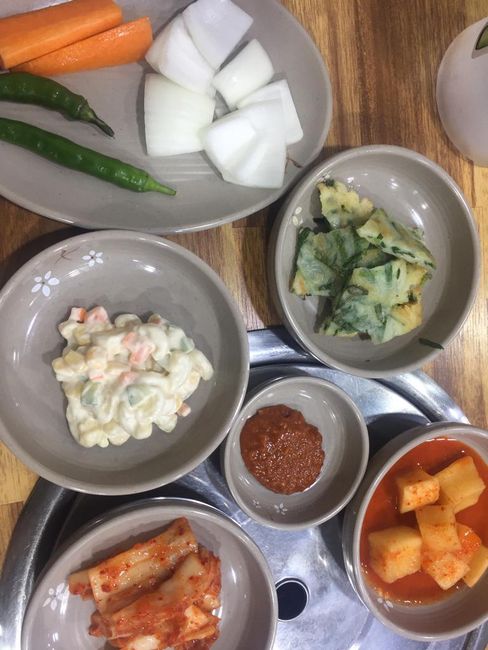
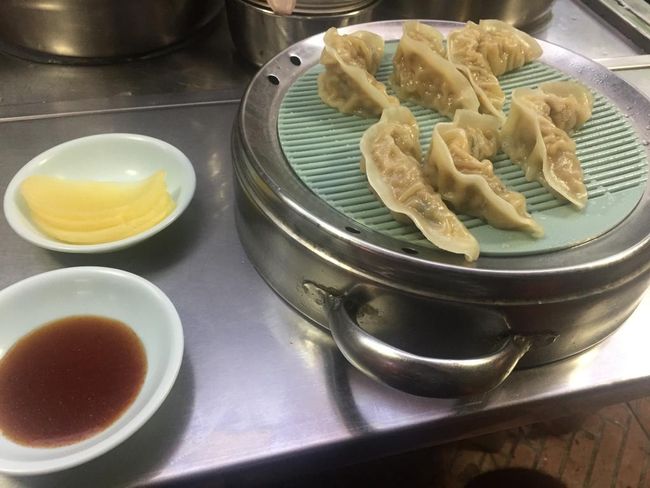
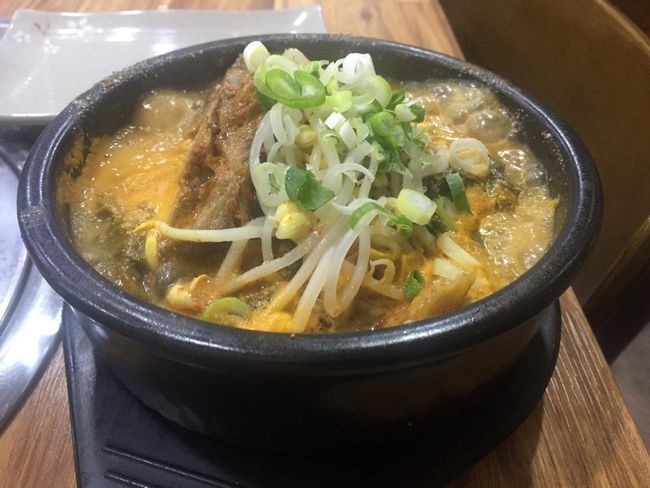
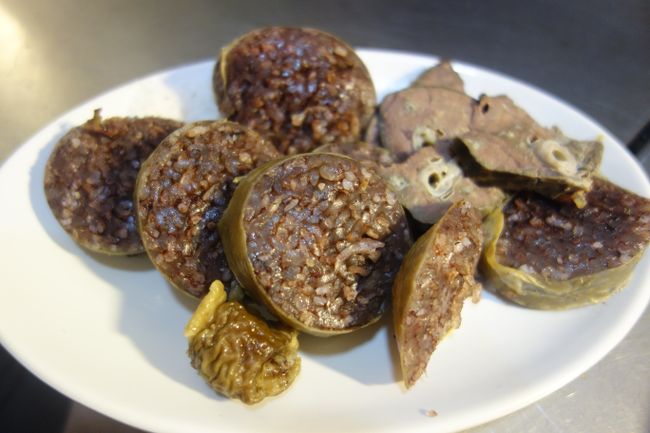
Misoratra anarana amin'ny Newsletter
We didn't know exactly what to expect in terms of food in Korea, since we hadn't really looked into it before. We had never tried Korean food before either. In Western countries, Korean cuisine is often reduced to kimchi, an ingredient that finds its way into many generic 'Asian-inspired' dishes, but we knew there had to be more.
So it was very exciting to discover Korean cuisine. As it turns out, it is a highly unique cuisine. The preferred eating utensils are flat metallic chopsticks and a long-handled spoon. In general, metallic tableware seems to be very popular in Korea, perhaps because of its heat-retaining properties. Many dishes are served at both ends of the temperature spectrum, on one hand, stews that are served boiling directly from the fire, on the other hand, noodle dishes served in crushed, frozen broth. Rice is also the preferred carbohydrate in Korea and is usually served in specially designed metal bowls with lids.
The most famous Korean dish that becomes a staple for all kinds of veggies when visiting Korea is Bibimbap. Translated, it means something like mixed rice. Various vegetables are prepared on a pile of rice and beautifully arranged with a large dollop of gochujang (fermented chili paste) and a fried egg. One can mix it with chopsticks and eat it with a spoon. If you order Dolsot Bibimbap, you get the whole thing served in a hot stone pot, in which a beautiful crust of rice ideally forms before mixing it. As I said, this is a very veggie-friendly dish and even vegan without the egg, but it can also be served with meat, in the case of the classic Jeonju Bibimbap (from the city of Jeonju) with raw beef.
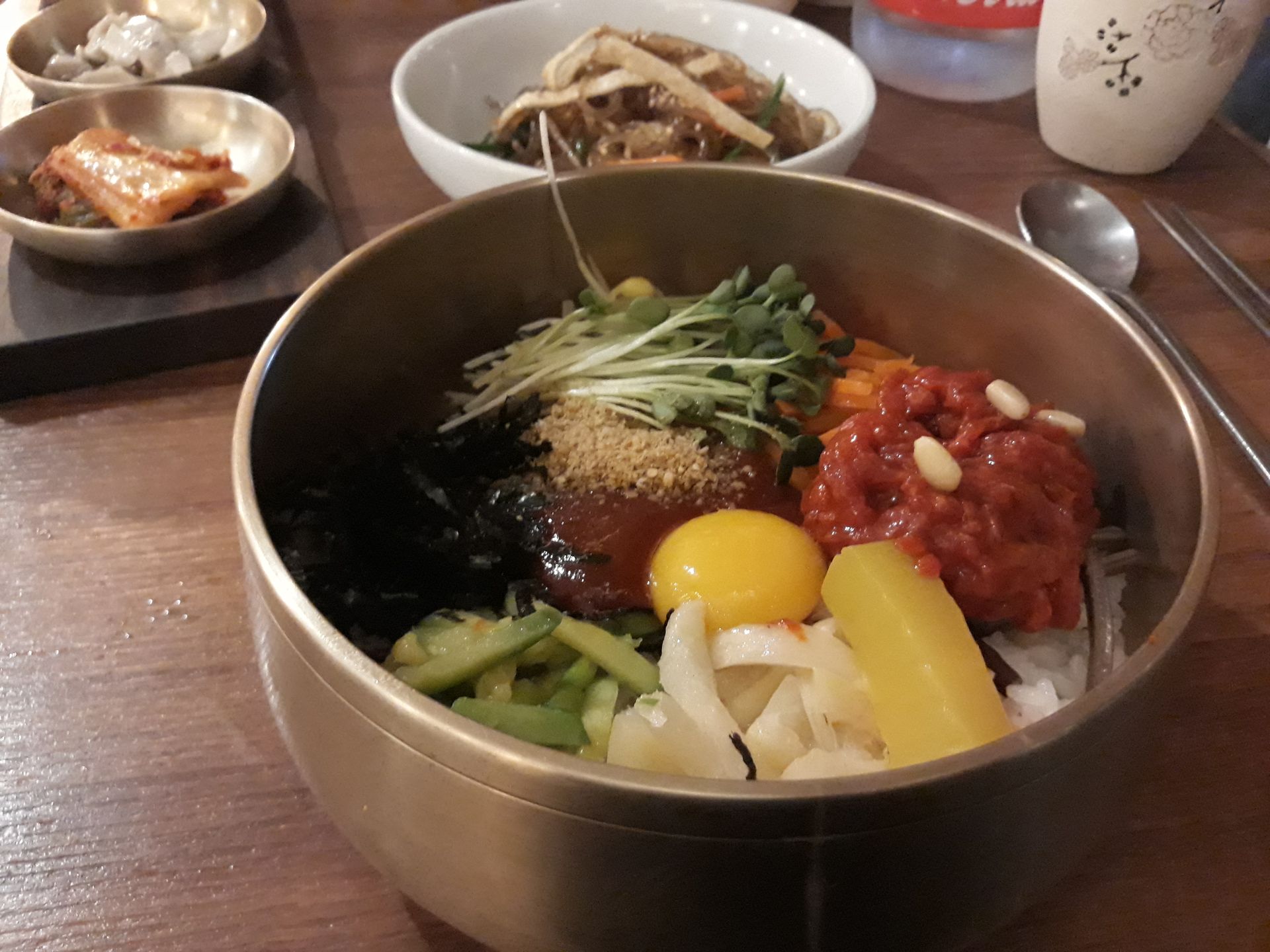
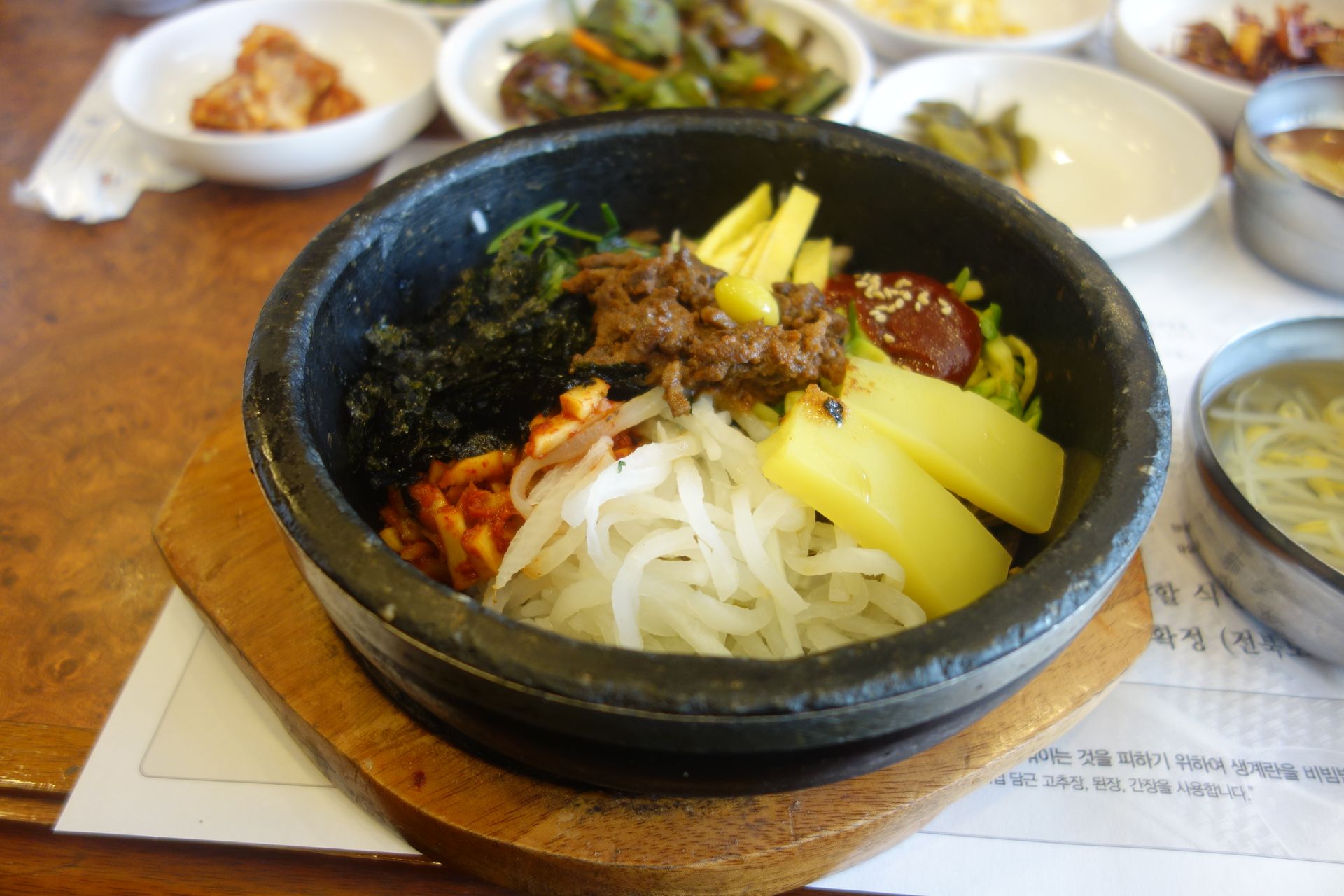
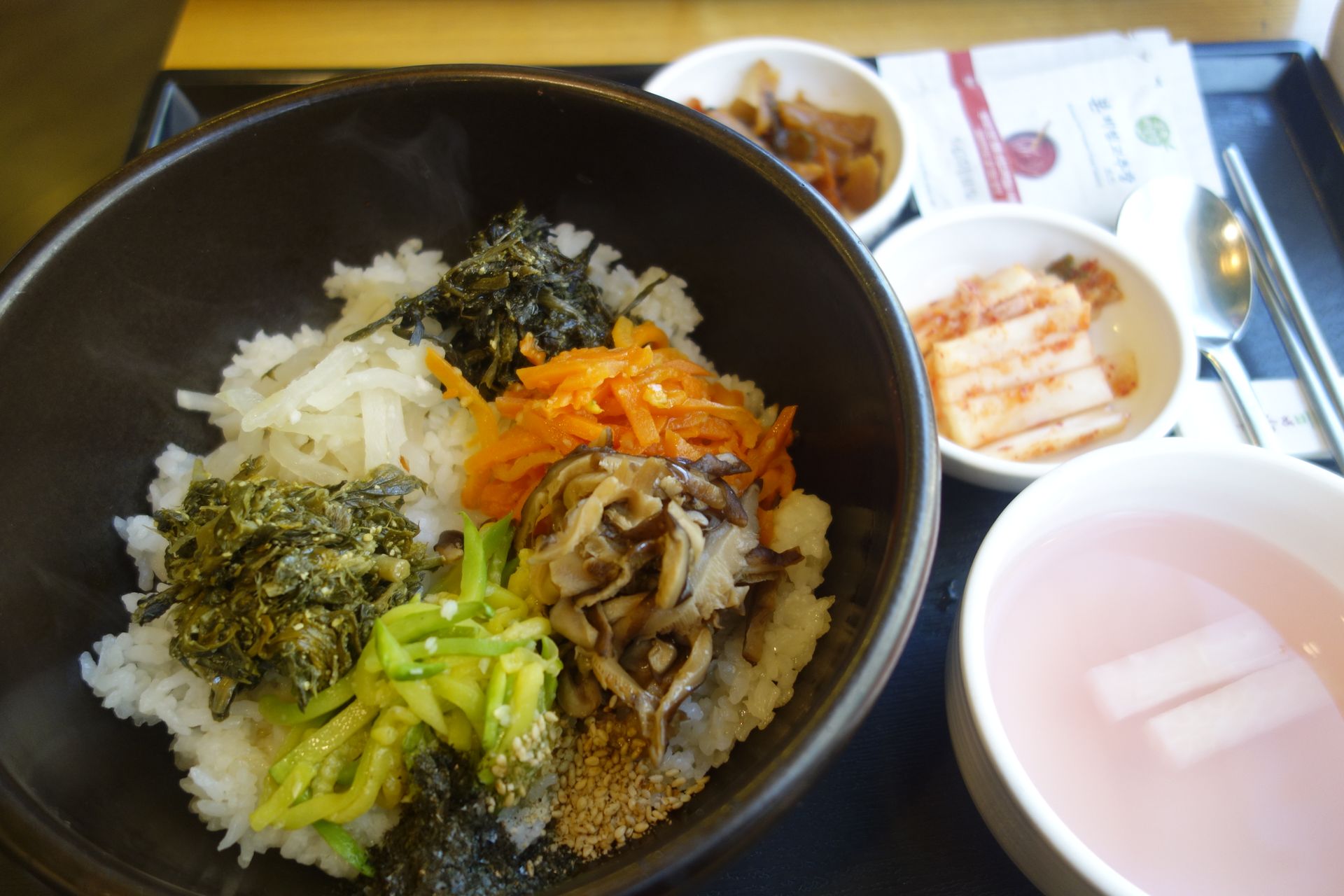


The greatest addition to a Korean meal, which should also be mentioned right at the beginning, is Banchan. These are small side dishes that are served in separate bowls with every meal. Even in non-Korean restaurants in Korea, you often see some kind of Banchan being served. Banchan is always cold and can consist of all kinds of ingredients, mostly vegetables. The vegetables are often (but not always) fermented or pickled, often marinated with a spicy, garlic-heavy seasoning paste. Simple Banchan are fried vegetables. Frequently used ingredients are radishes, cucumbers, cabbage, sprouts, Korean zucchini, or shiso leaves. Animal ingredients would be, for example, raw or cooked squid, dried small fish, or quail eggs. Often, a table full of Banchan is served, sometimes only one or two. However, what is almost never missing is the classic kimchi made from Chinese cabbage. The only restaurants where kimchi is not standard are Chinese-Korean ones. The cabbage is salted, sometimes mixed with other vegetables like carrot or leek, massaged with a spicy seasoning paste, and then packed into ceramic fermentation pots. It can be consumed in various stages of maturation, either freshly made or fermented for months, both delicious versions. While Chinese cabbage is the most common base for kimchi, kimchi is the term for all vegetables treated in this way. Another type of kimchi is water kimchi. For this, the vegetables are often only lightly or not spicy at all, with some garlic and ginger, fermented with plenty of saltwater. The slightly acidic liquid is then served with the vegetables as a refreshing, cold soup. At markets, you can find countless stands specializing in Banchan, so everyone can stock up on a large supply, both privately and gastronomically. There is still a lot that could be said about Banchan, but this article should also cover other delicacies.
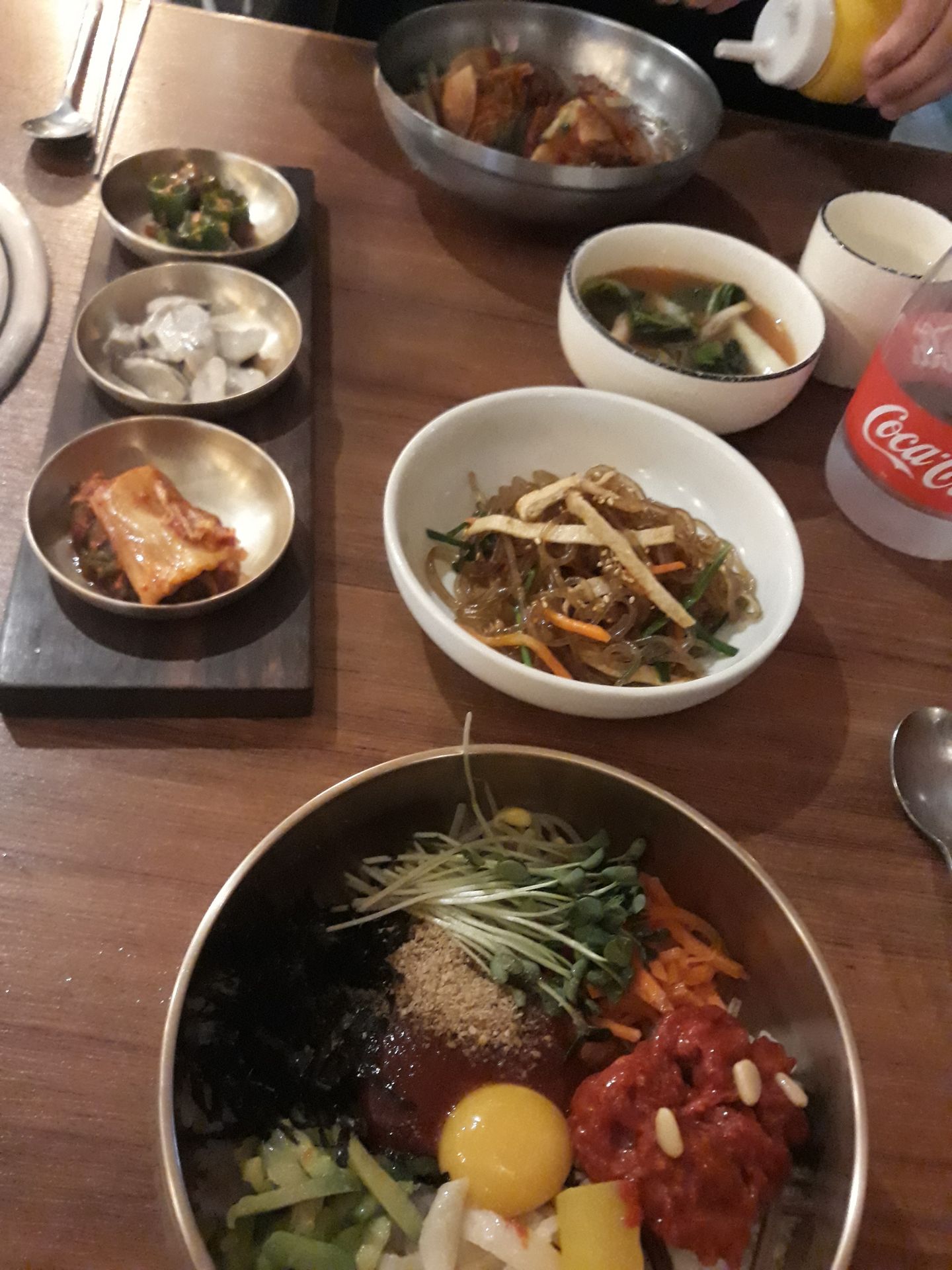
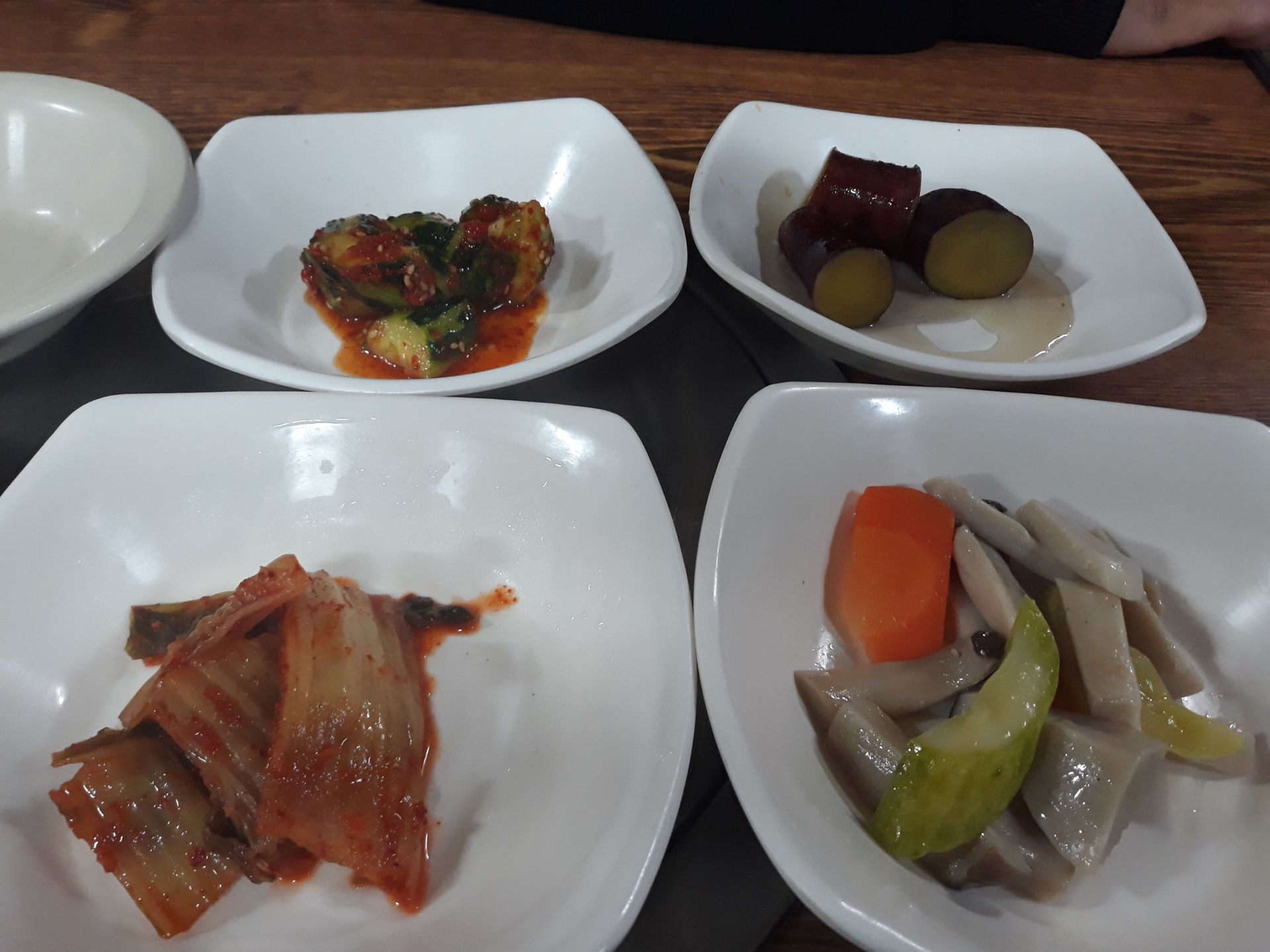

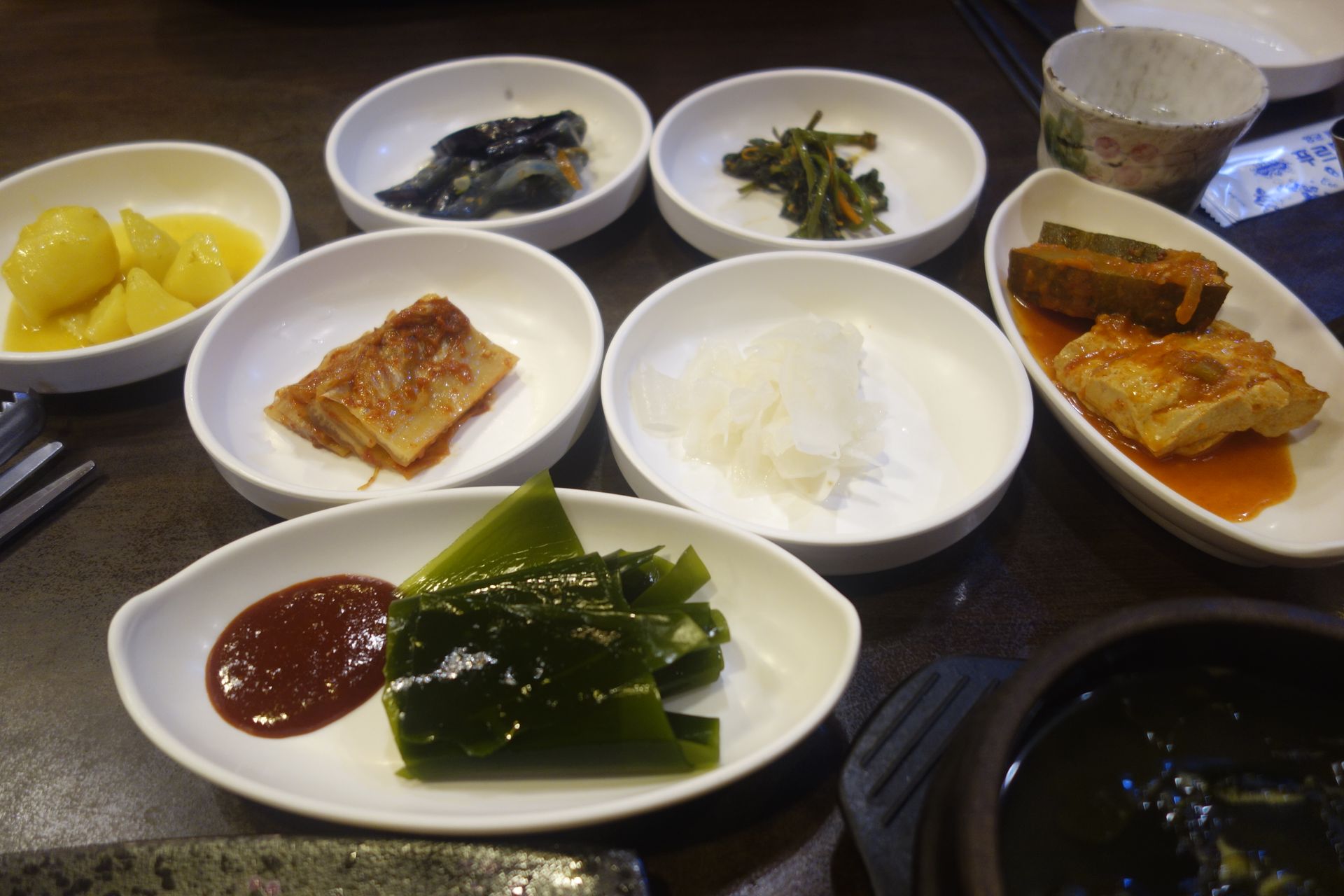


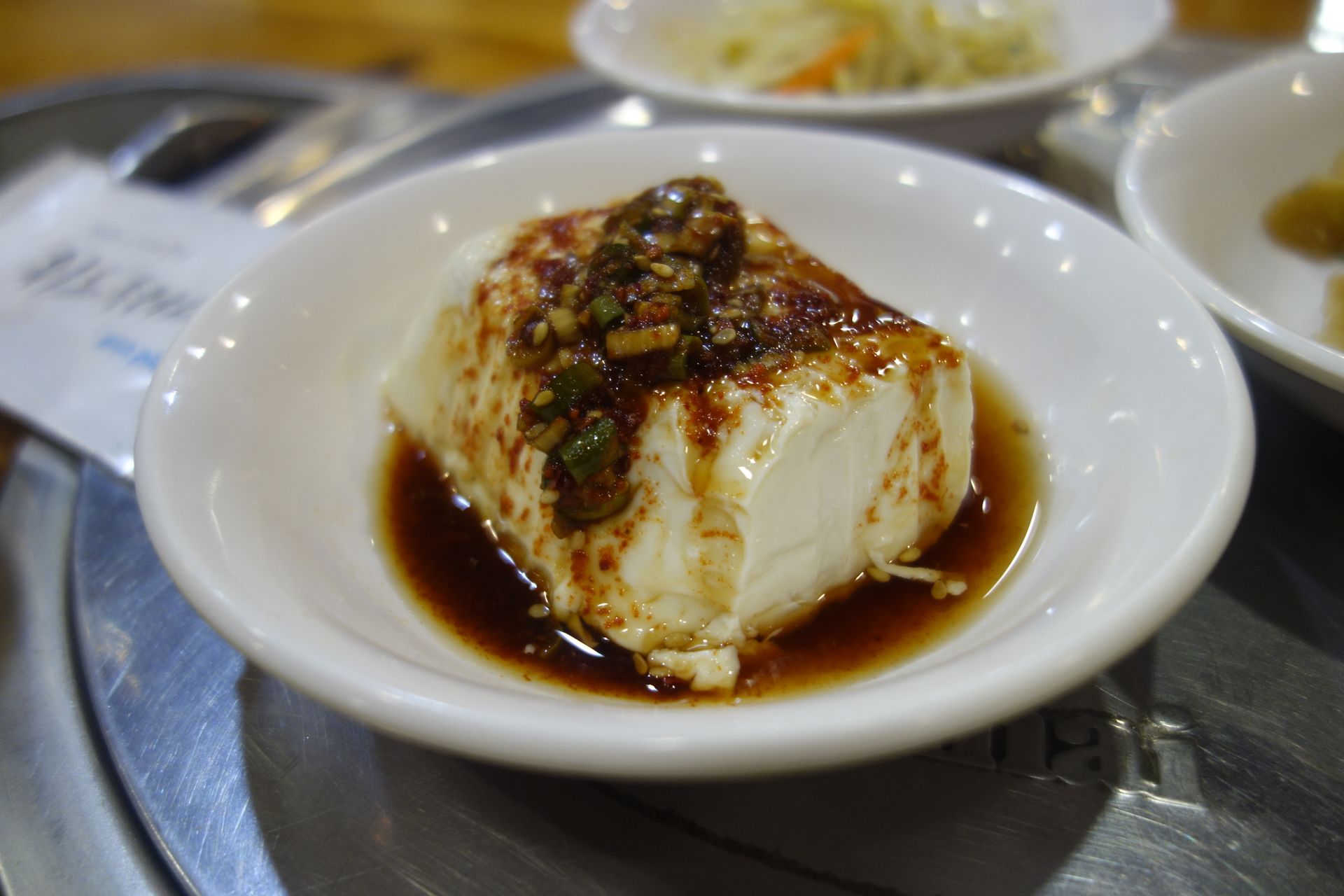

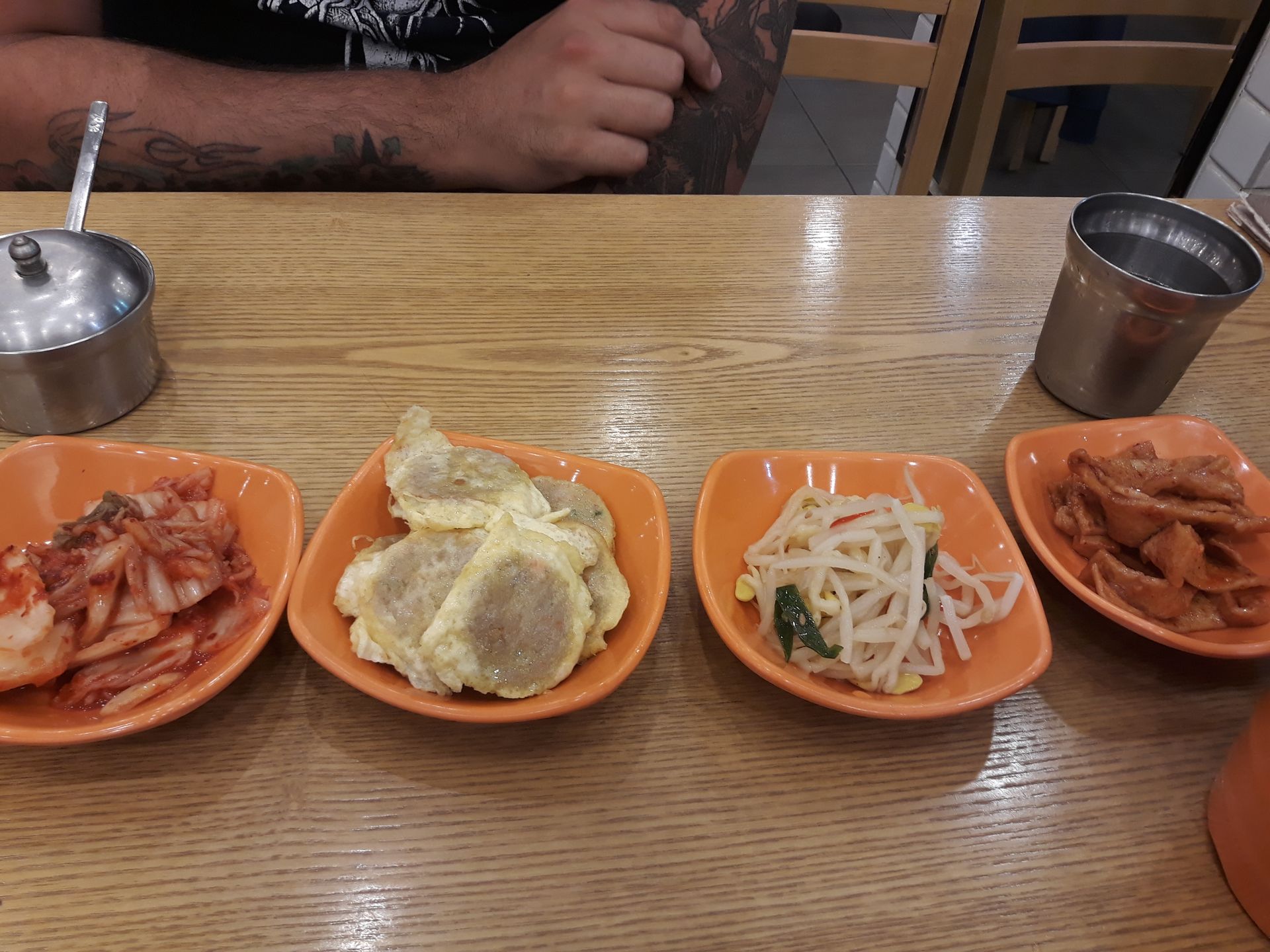
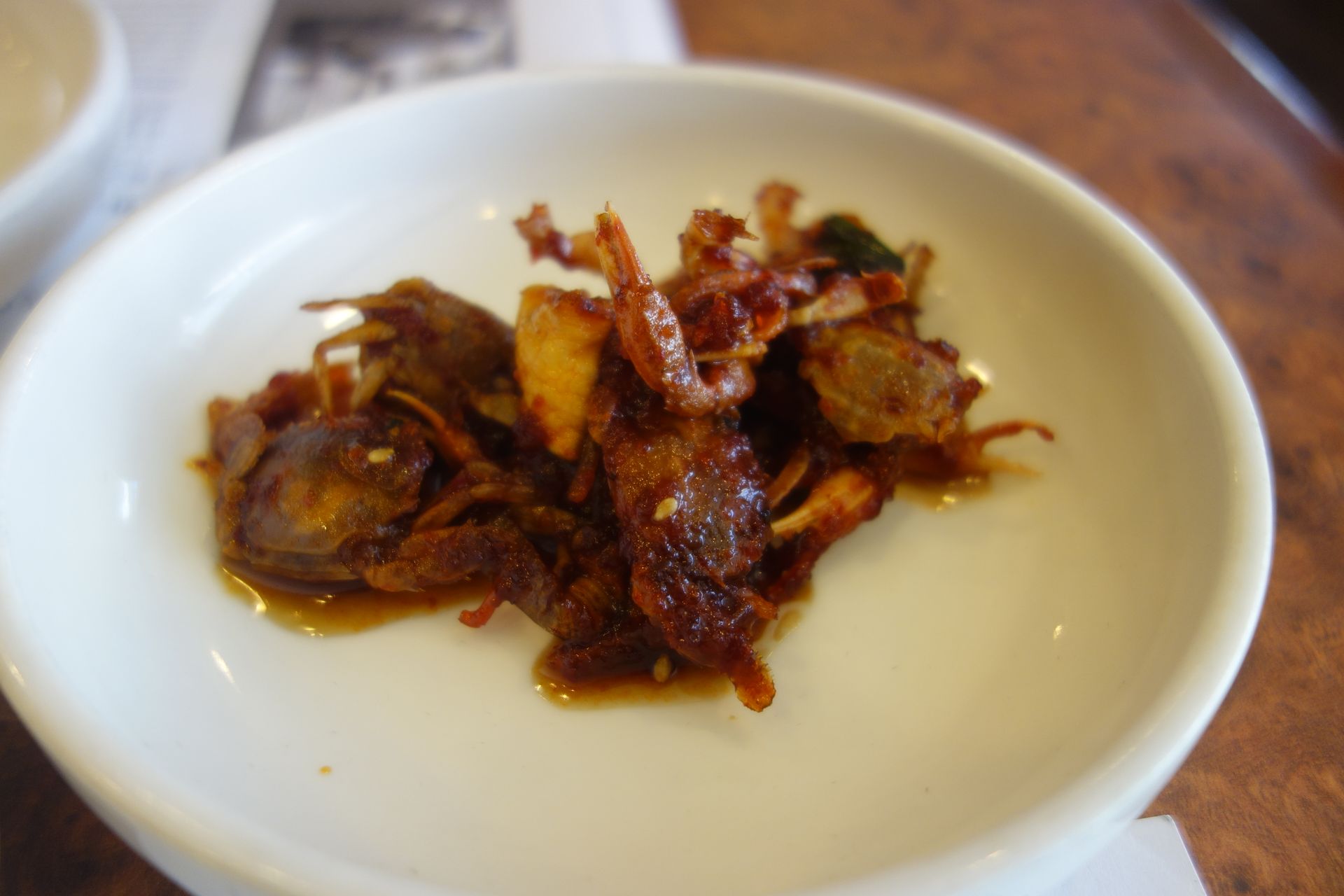


Korean dishes are often characterized by the use of fermented ingredients. Fermented bean pastes and chili pastes like gochujang give stews and soups a distinctive flavor. The beloved kimchi is also often used as an ingredient in hot dishes. Soups (tang) and stews (jjigae) make up a large part of the most popular Korean dishes, such as Kimchi Jjigae, a kimchi stew, or Gamjatang, a soup made from pig spine that is fun to suck the meat and gelatinous pieces from the bone. Soft tofu (sundubu) is an ingredient that is also commonly used in stews. However, not all Korean dishes are characterized by the same strong and spicy flavors. Dishes like Samgyetang, a chicken-ginseng soup especially popular in summer, or Galbitang, a beef short rib soup, are noticeably milder in flavor and sometimes almost bland.
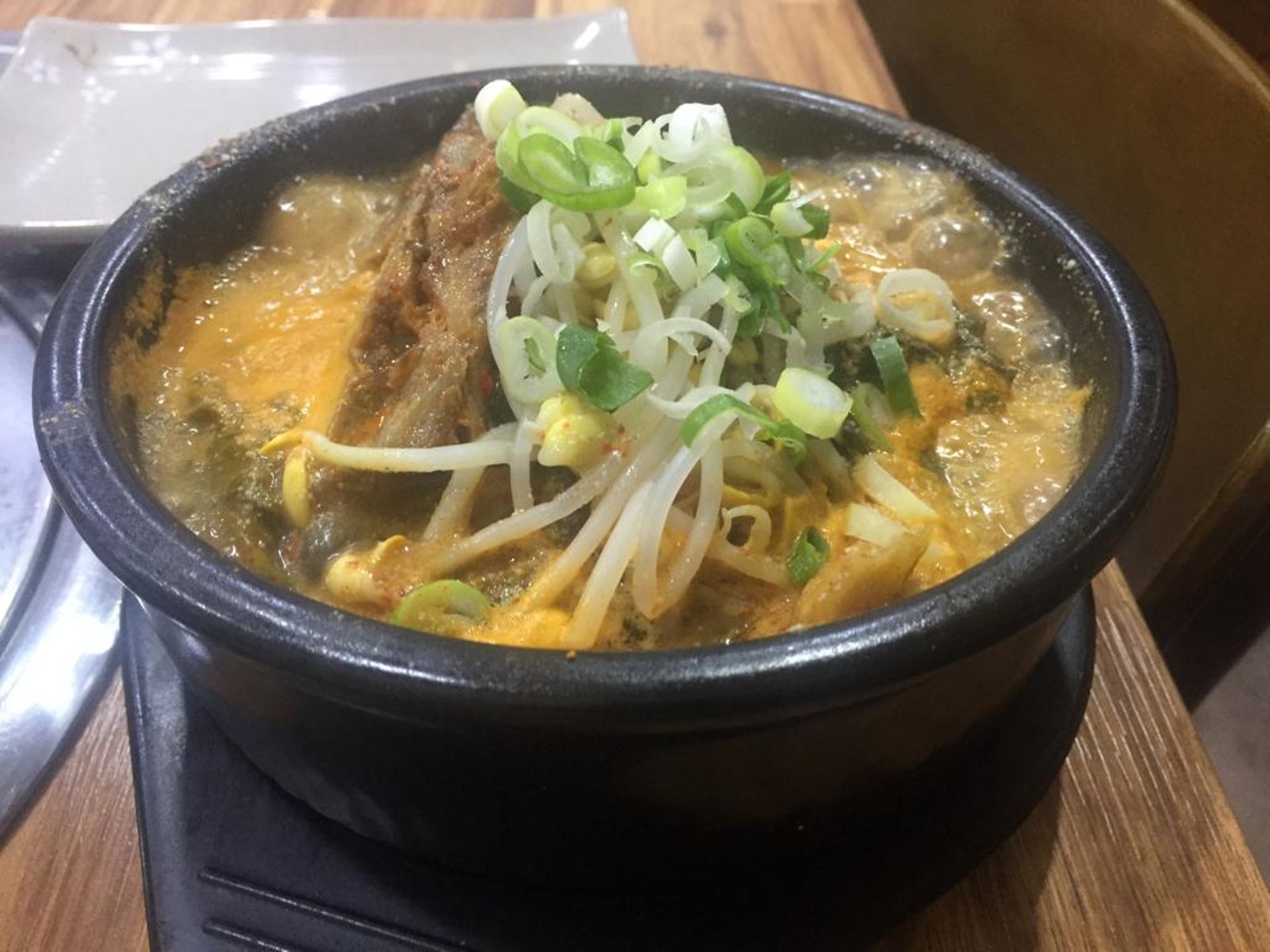





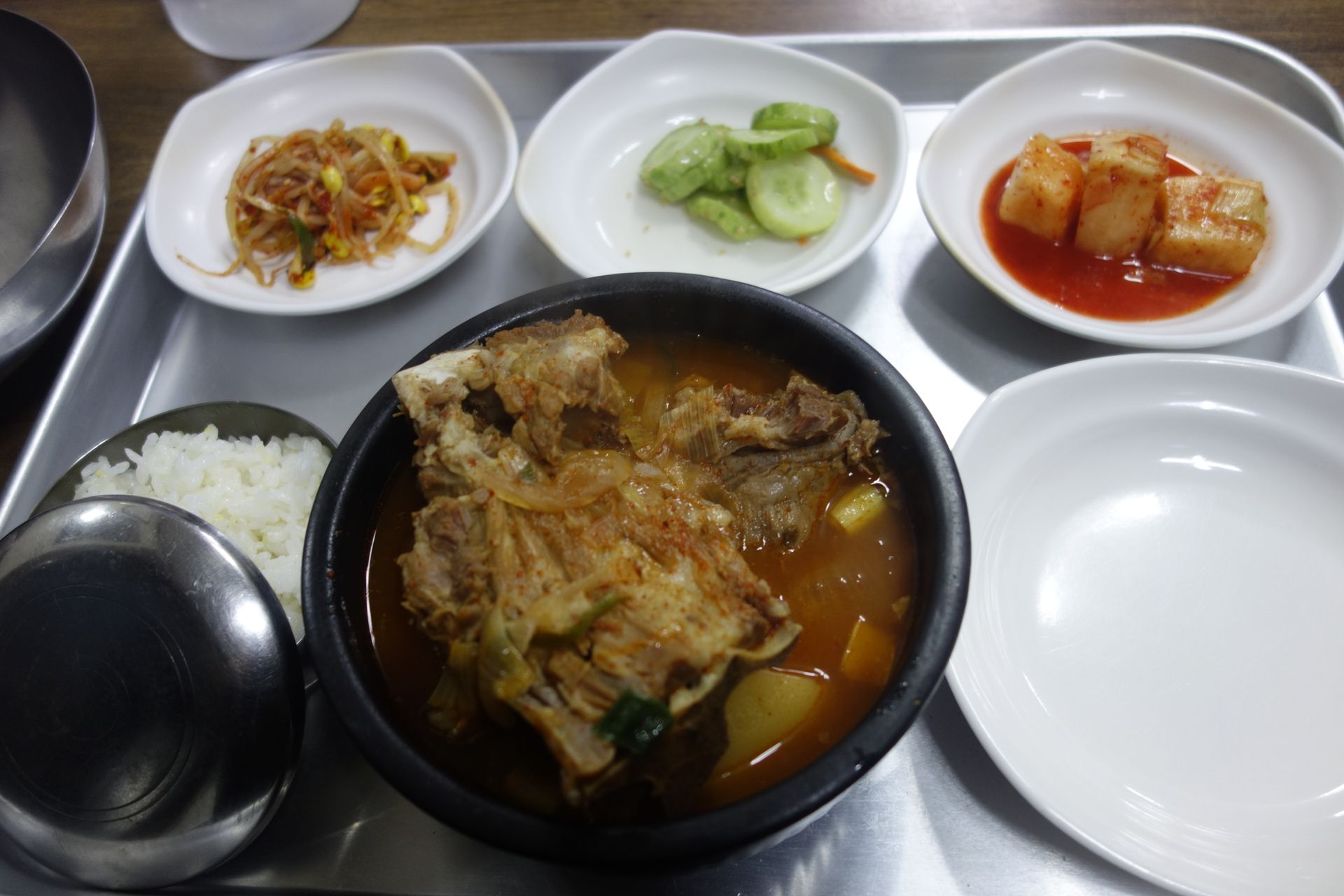
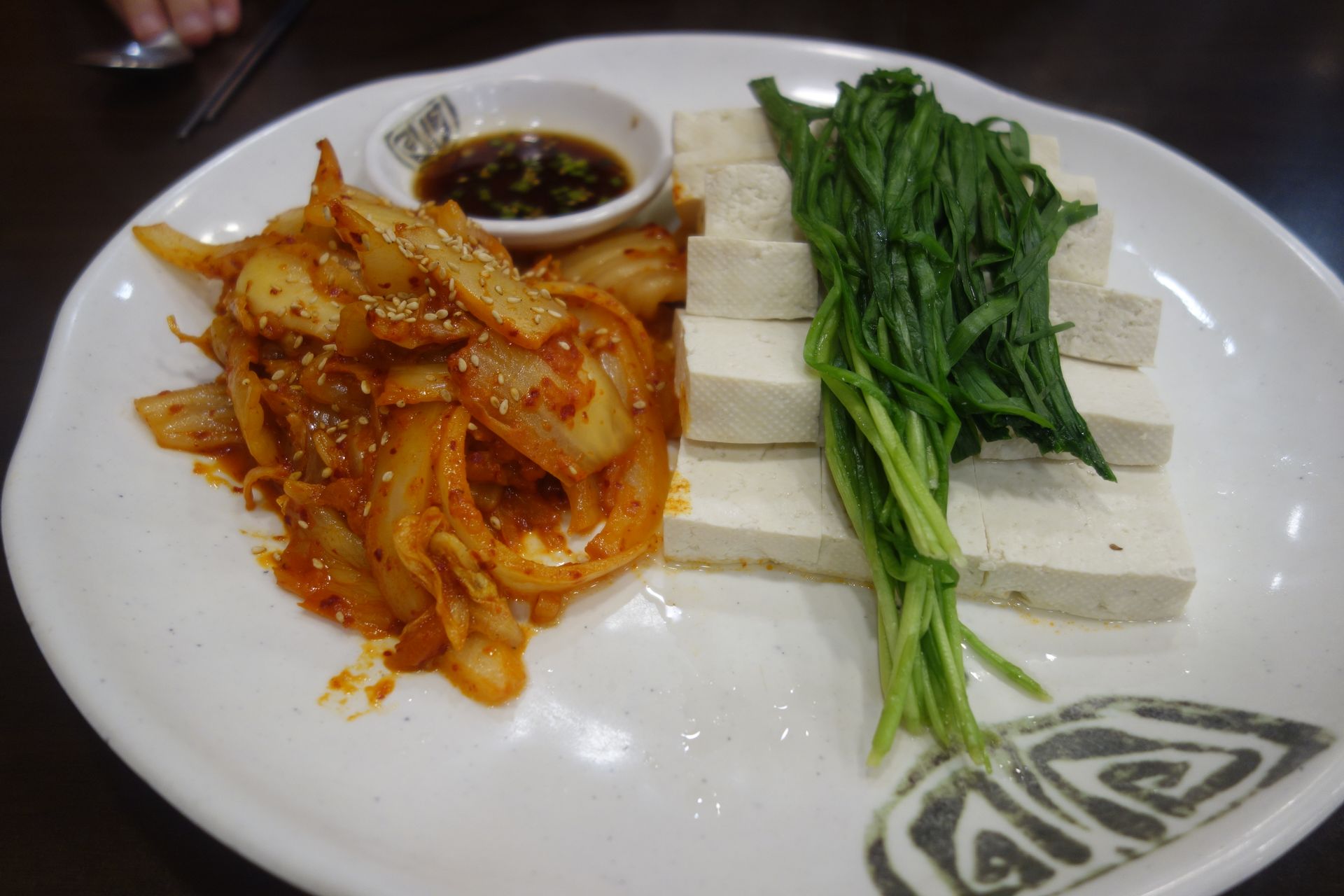
One thing you notice in Korea is that many places specializing in certain dishes or types of dishes do not sell individual portions. Often, a minimum of 2, sometimes a minimum of 3 portions must be ordered, which can be frustrating for solo travelers. Often these are dishes that are served on small gas stoves or hot plates at the table or even freshly prepared. The most well-known dish of this kind is Korean BBQ. In Seoul, it feels like every other restaurant is a KBBQ restaurant. There is a small grill, often a charcoal grill in the middle of the table, usually even built into the table itself. A hood hangs directly over each table. One can order raw meat of choice, usually pork or beef, and grill it themselves. As with many things in Korea, scissors are on the table to cut the pieces of meat. In addition, stacks of sesame, individual salad and shiso leaves are served, in which one wraps the pieces of meat together with various banchan, raw (or self-grilled) garlic, and various sauces, and eats them in one bite.
The drink of choice for KBBQ is Soju, a vodka-like spirit with 20-40% alcohol. It is consumed in large quantities in Korea, sometimes mixed with beer. Another delicious alcoholic beverage is Makgeolli, unpasteurized rice wine, which is slightly sparkling and refreshing. There is a separate term for dishes that are intended to be eaten while drinking, Anju. Of course, drinking is not mandatory. Popular Anju dishes include Jokbal (braised pig's foot with hock), Bossam (steamed pork belly), and Pajeon (savory pancakes, usually with whole spring onions). The dish that is preferred to be eaten with beer is fried chicken. Korean fried chicken has made a name for itself worldwide and is served either plain with salt and pepper or tossed in some kind of sweet and spicy sauce. Plastic gloves are provided for eating.


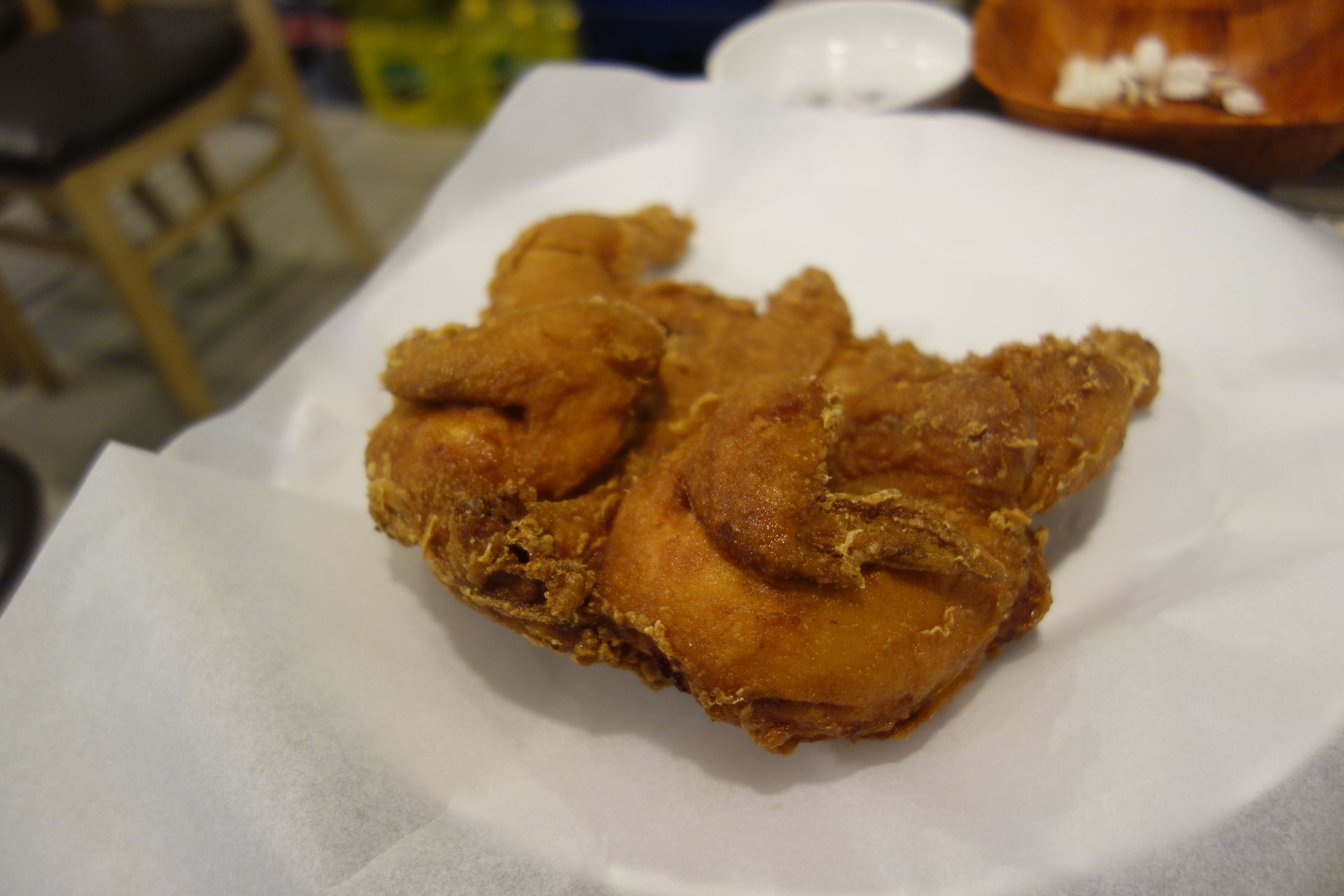
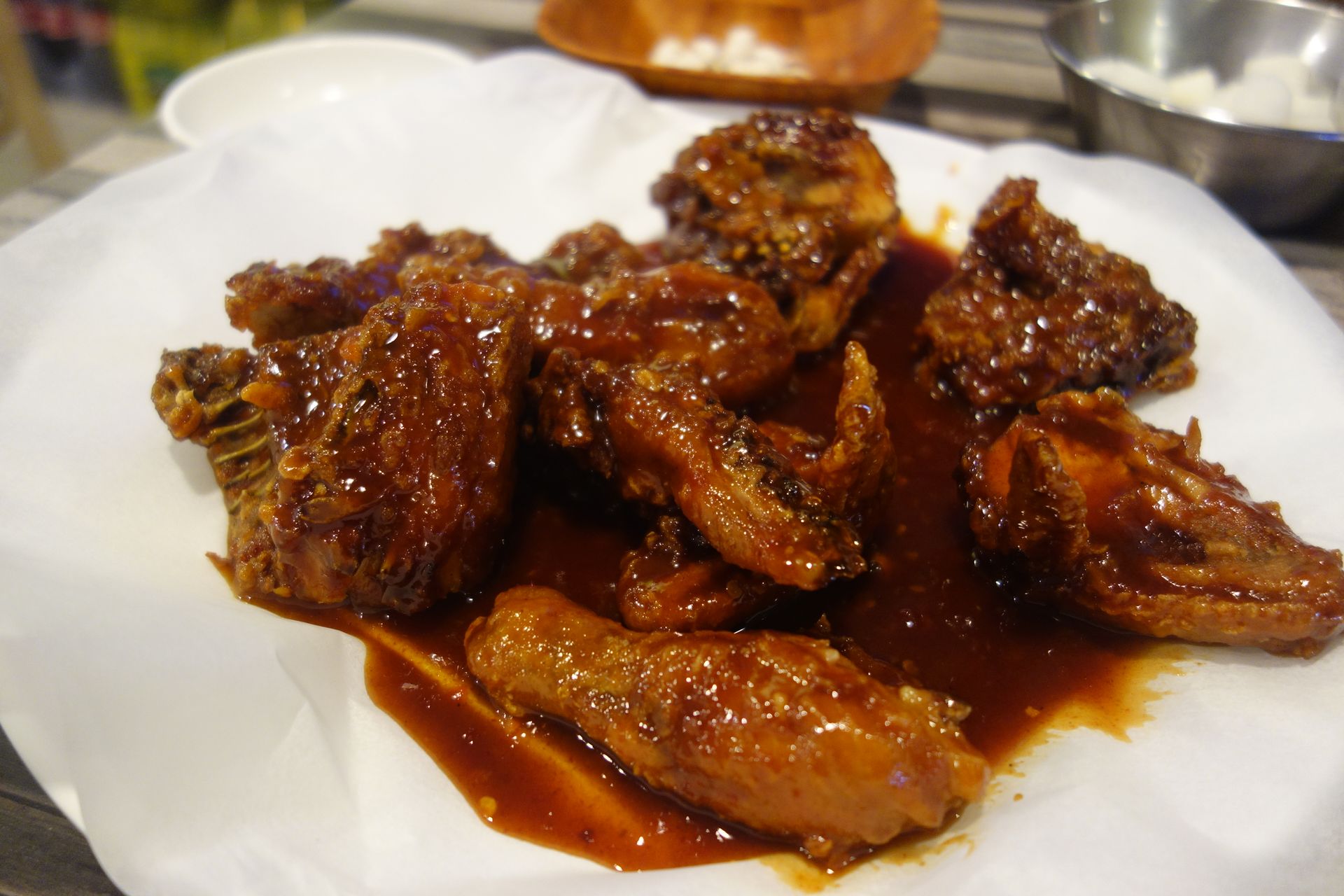

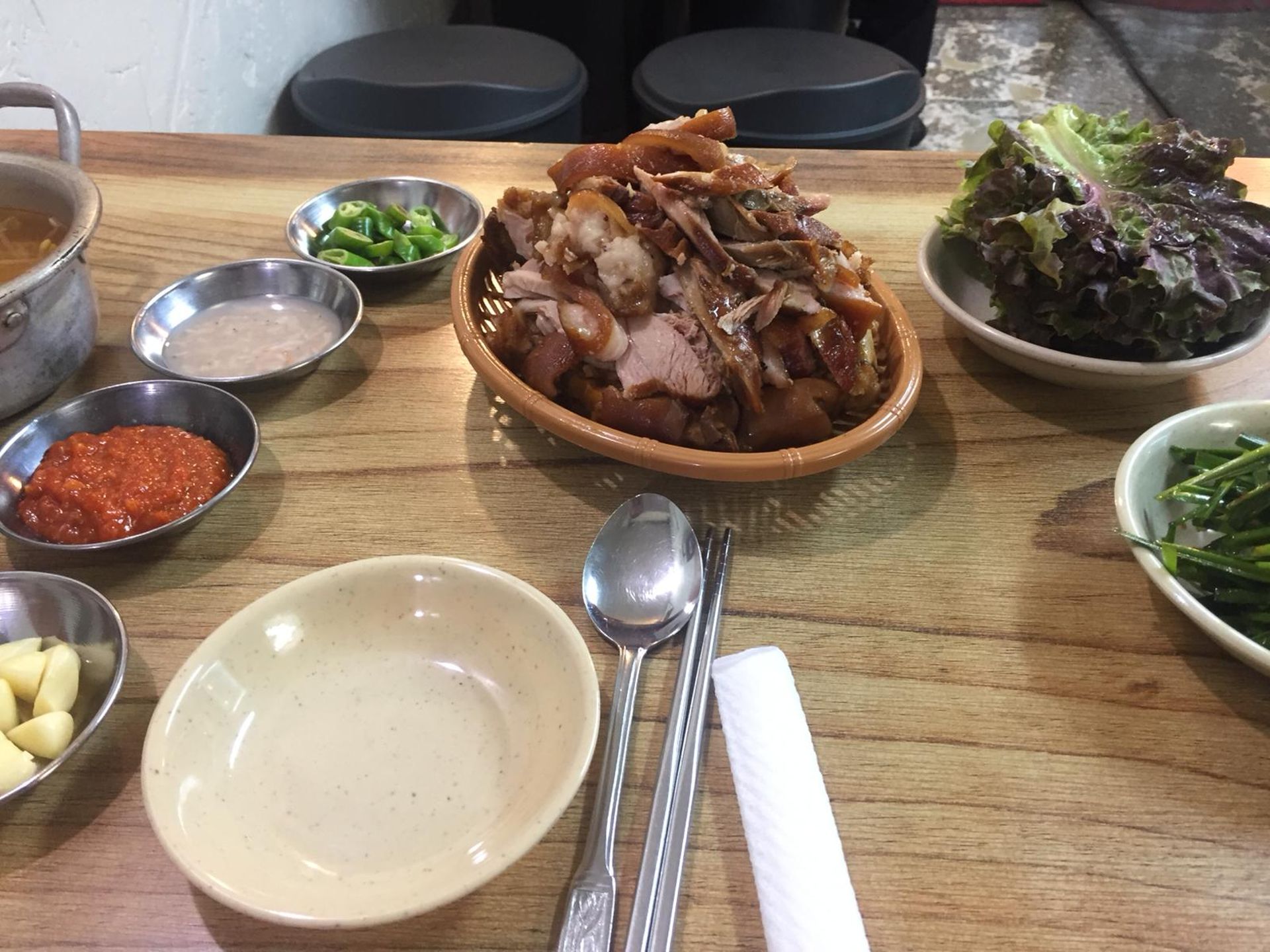

Due to its proximity to the sea, one must not forget the popularity of various seafood in Korea. Especially squid and octopus seem to be very popular and are grilled, fried, or braised. Sometimes the octopus is eaten raw, for which it is chopped up quickly and served so that the tentacles are still moving. In fish markets, you can have freshly bought fish and seafood prepared in restaurants on the premises, and the quality of the products is so good that the most popular preparation is raw. However, these raw fish meals are extremely expensive and not an everyday occurrence. More everyday fish dishes would be delicious stews like Galchi Jorim made from hairtail fish or simply grilled fish, often some kind of mackerel.
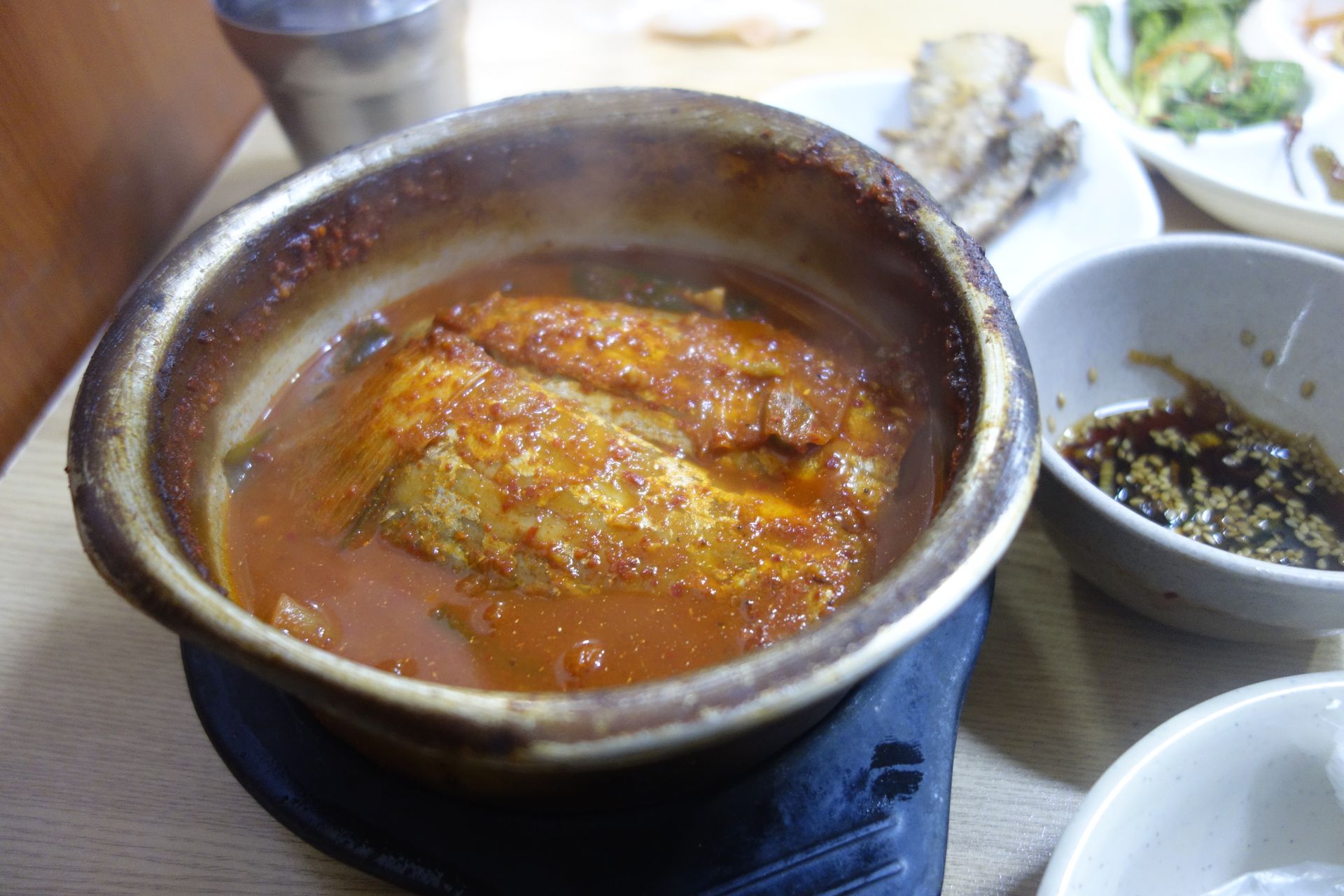
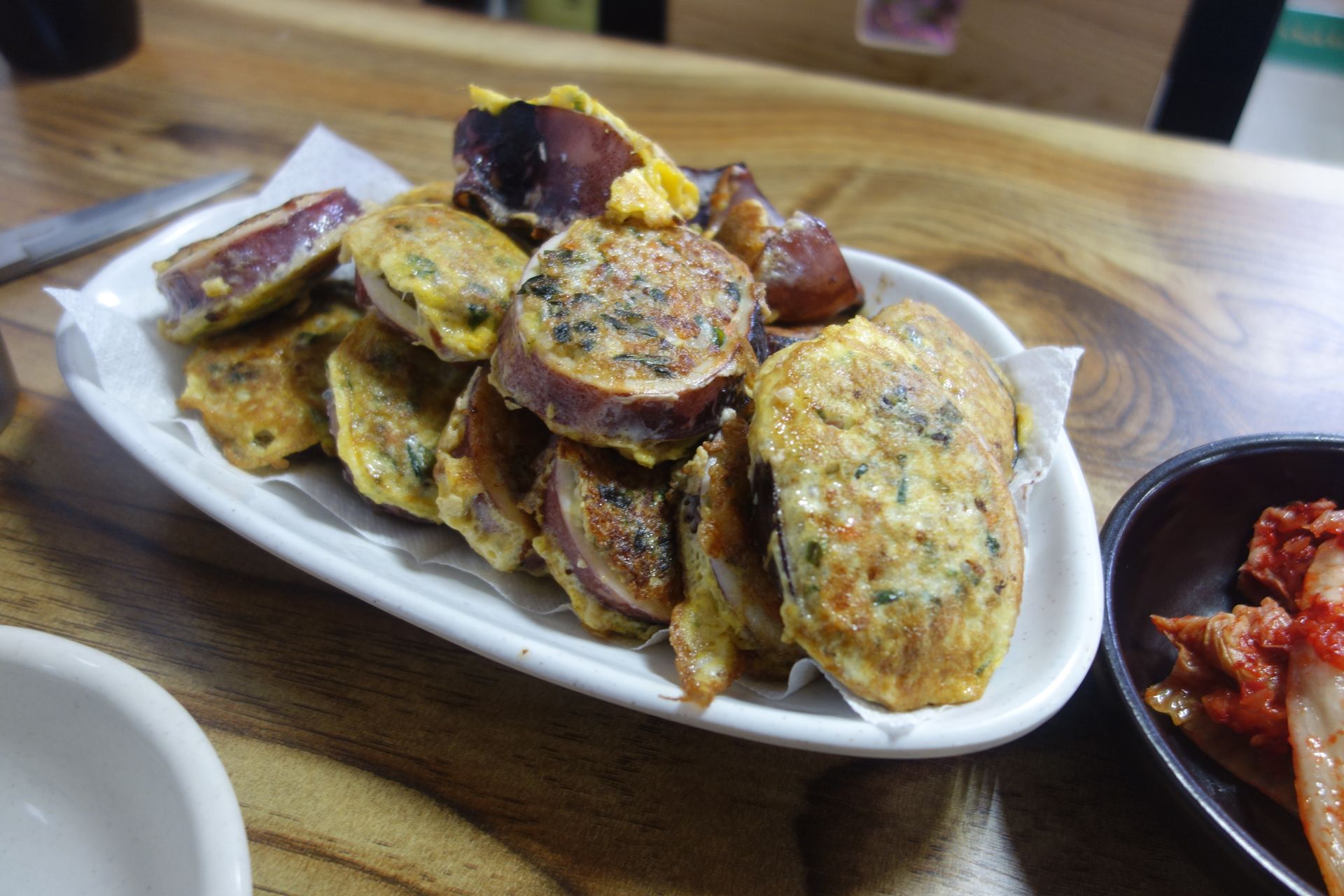


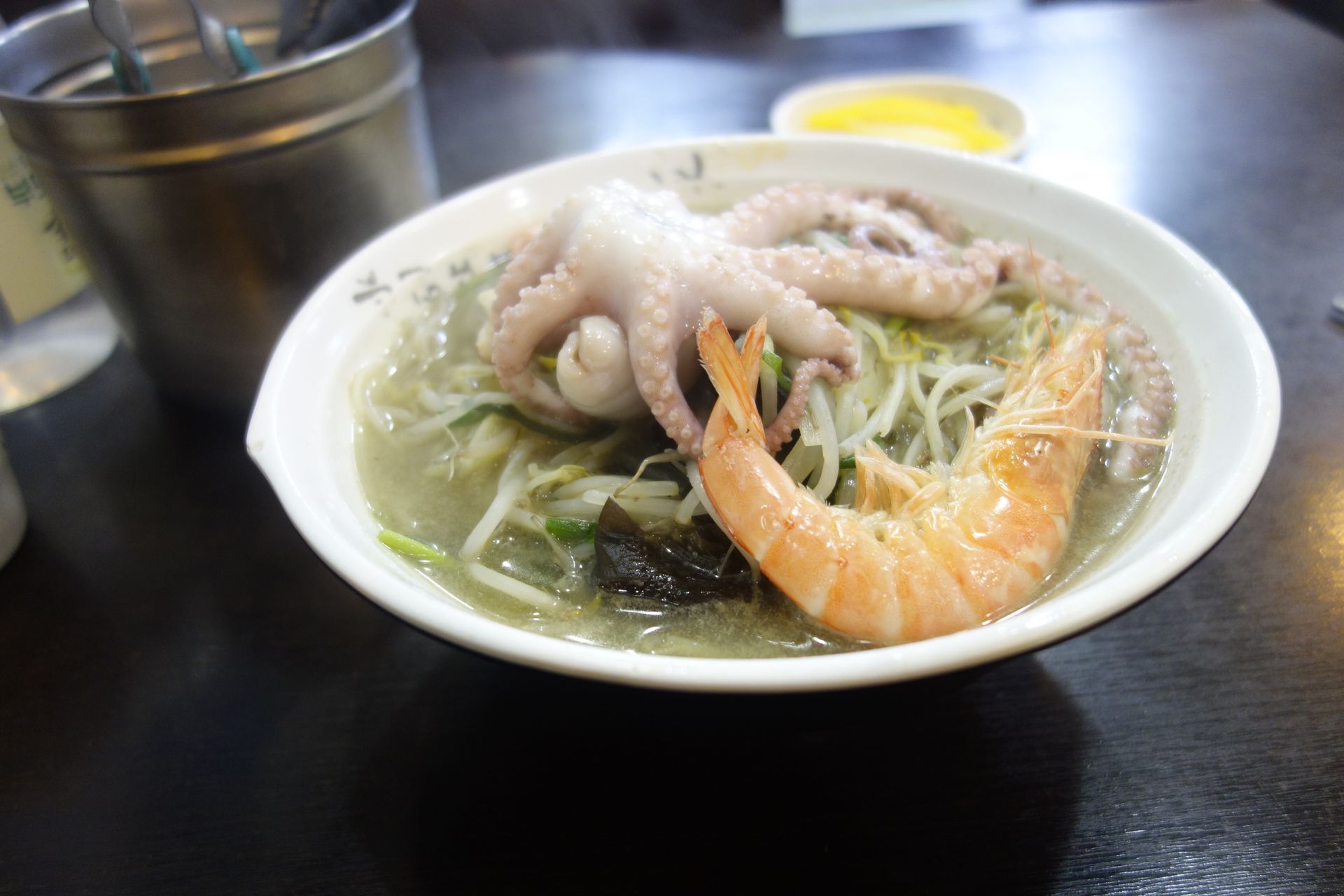
As a smaller meal, often as a snack, sometimes even as a side dish, there are also a variety of noodle dishes in Korea, both with and without soup. Naengmyeon is probably the most common one to find. Originally from North Korea, it consists of long, slippery buckwheat noodles (use scissors!) with some pickled and raw vegetables, a half-boiled egg, served in a frozen broth based on beef, chicken or water kimchi. The latter would often even be suitable for veggies. If you want to add some more kick, you usually get pretty spicy Korean mustard and vinegar served with it. Alternatively, it is sometimes served without broth but with spicy chili paste. There are many cold noodle dishes, but some of them are only served in summer, which makes sense as a refreshing dish. There are also warm noodle dishes, which are usually very simple and have broths that are not as complex as, for example, Kalguksu, which consists of hand-cut noodles and is served in a broth made from dried anchovies. There are also a number of noodle dishes that are called Chinese, but are a Korean version of the original Chinese versions, such as Jajangmyeon (derived from Chinese zha jiang mian), a noodle dish with a sauce made from fermented black beans. Instant noodles must also be mentioned, as they are very popular here, even in restaurants you can order them, either prepared according to the instructions on the package or as an ingredient in a more elaborate dish.

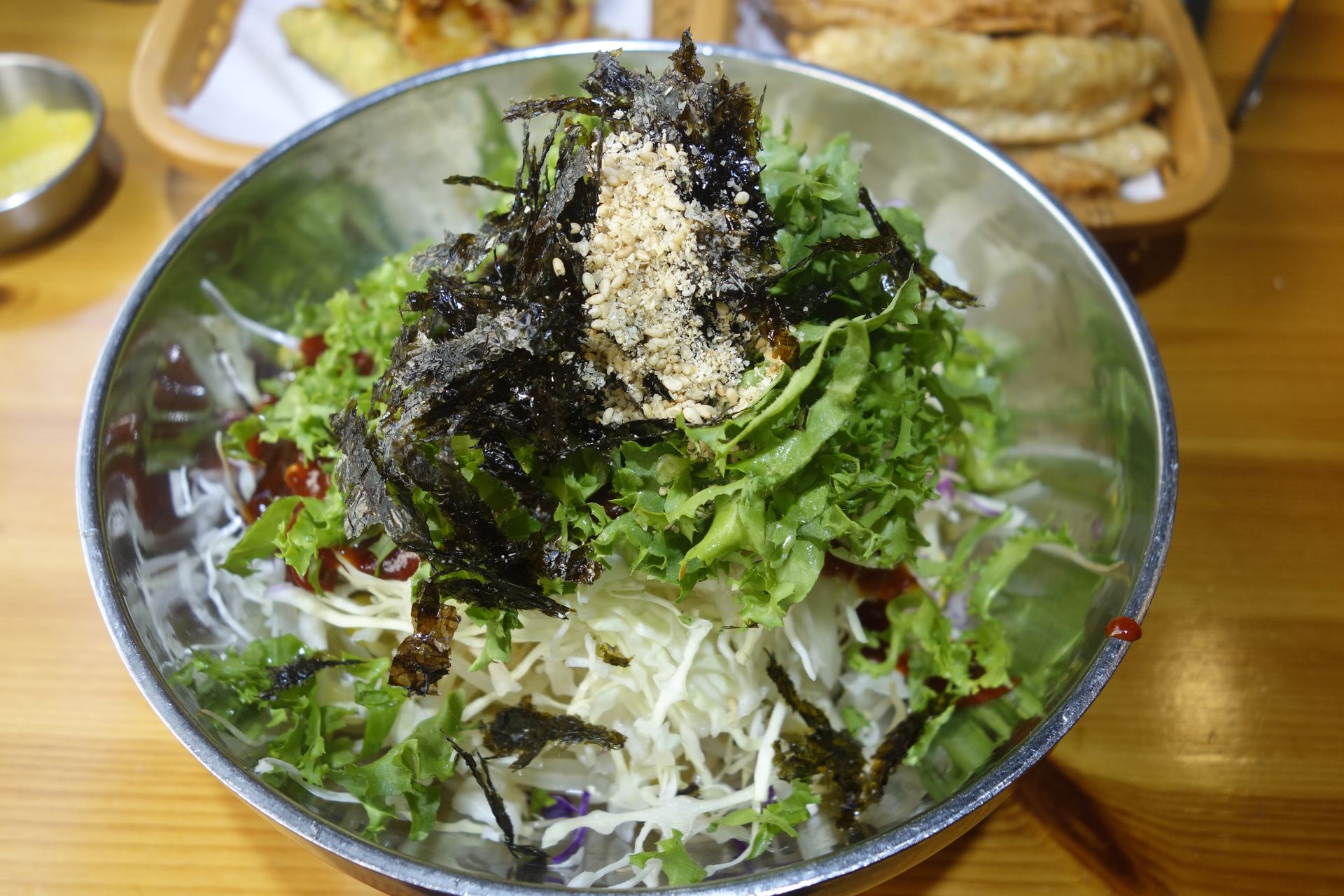
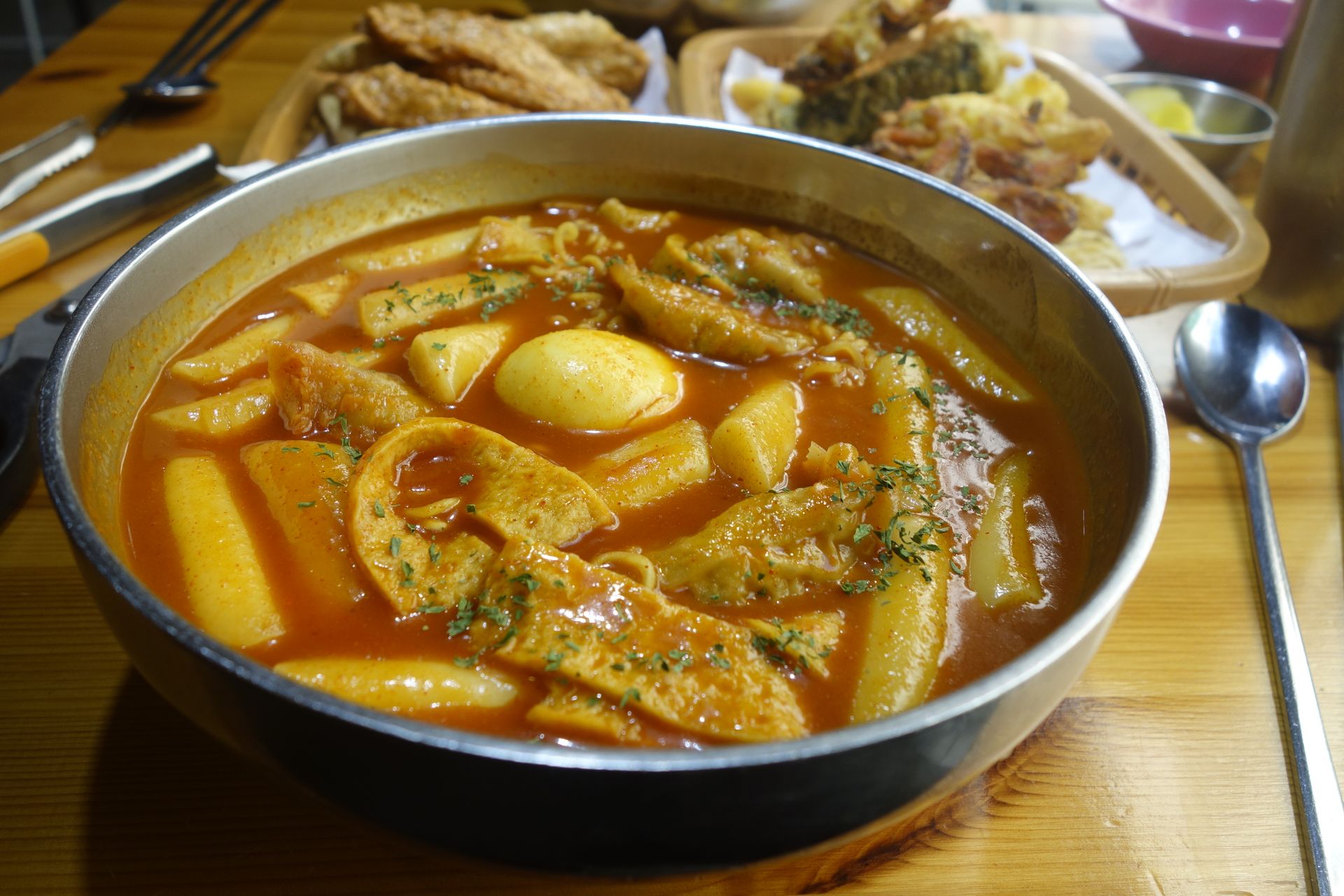
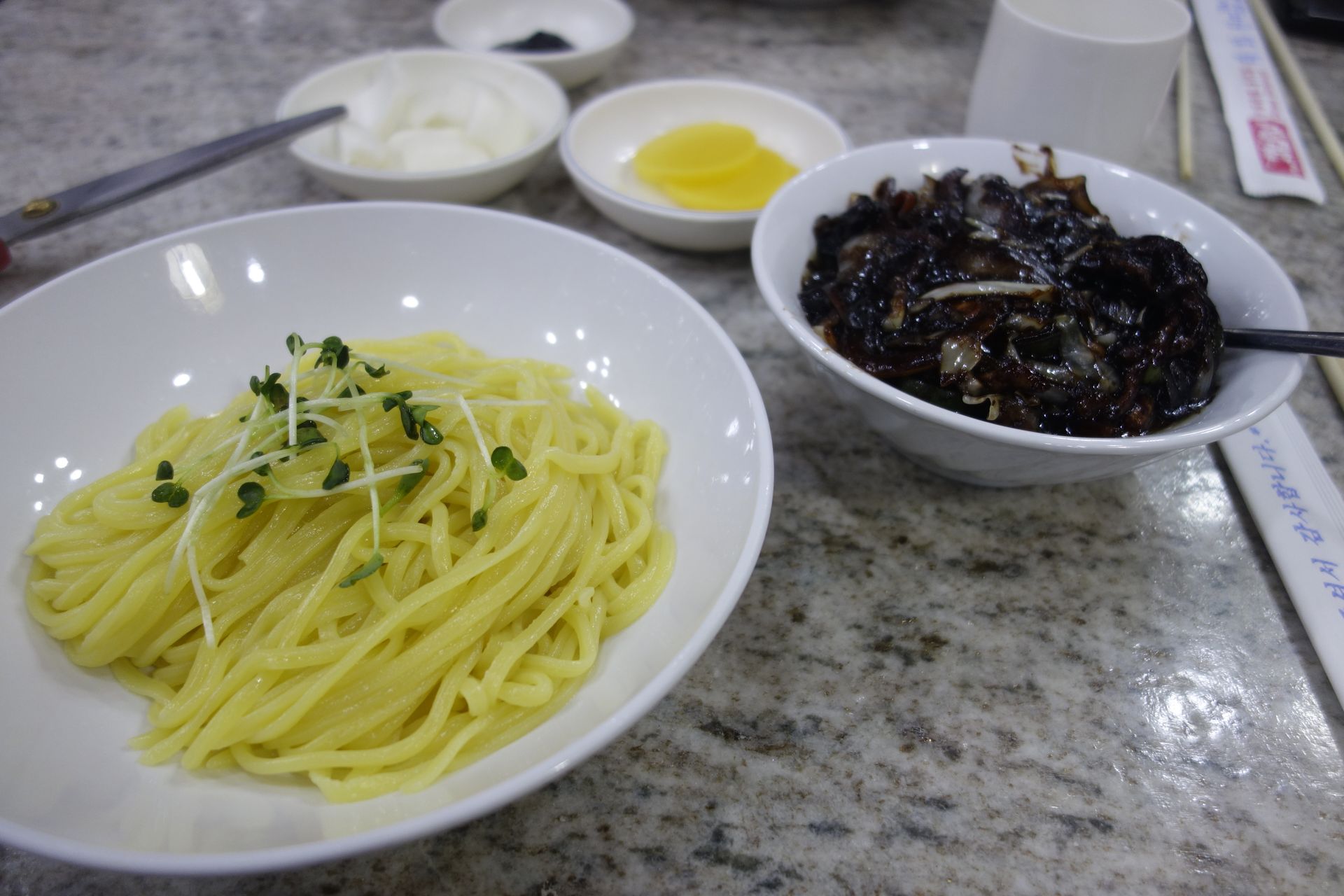

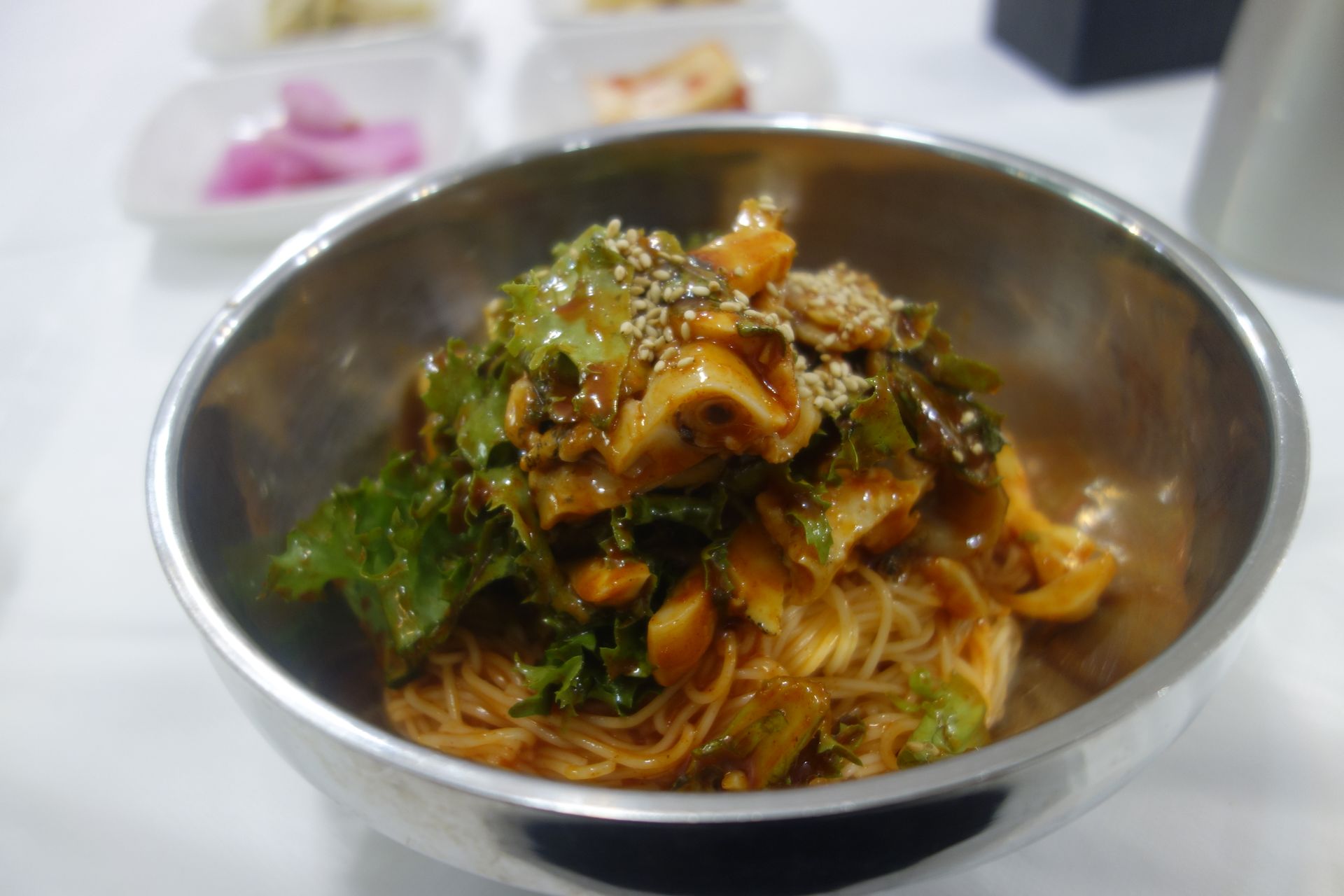


And before the article gets too long, there is one more paragraph about Korean street food. In Korea, unlike many other countries in East and Southeast Asia, main meals are very rarely eaten at street stalls. The many street food vendors specialize more in snacks and smaller meals. Tteokbokki is probably the most common one to find. These are thick rice cakes (or noodles?) in a gochujang sauce. The same stalls often also sell sundae, Korean blood sausage based on sticky rice often with a few slices of soft-boiled lung. Fish cakes called odeng swimming in a fishy, kept warm broth are skewered, which you take out yourself and pay for the number of skewers in the end. Grilled skewers of all kinds are also easy to find. There is also something more veggie-friendly, Gimbap, rice with vegetables (sometimes even spam or other meat products) rolled in seaweed sheets and brushed with sesame oil, but one should never say Maki! There are also various types of savory pancakes, some made from mung beans. And of course, one of our favorite things, although meatless is rather rare, there are dumplings, called Mandu in Korea. Juicy filled with meat, shrimp, vegetables, tofu, and of course kimchi, they are either steamed or fried. In addition, there is yellow pickled radish. In addition to the more traditional ones, there are also many more modern street food creations, which are often based on "drama". String-pulling cheese is often used, or creations that could come from the fantasies of Instagrammers, with names like "Baffle" or similar. Often very saucy, messy, and sweet. However, we were not really convinced by them.
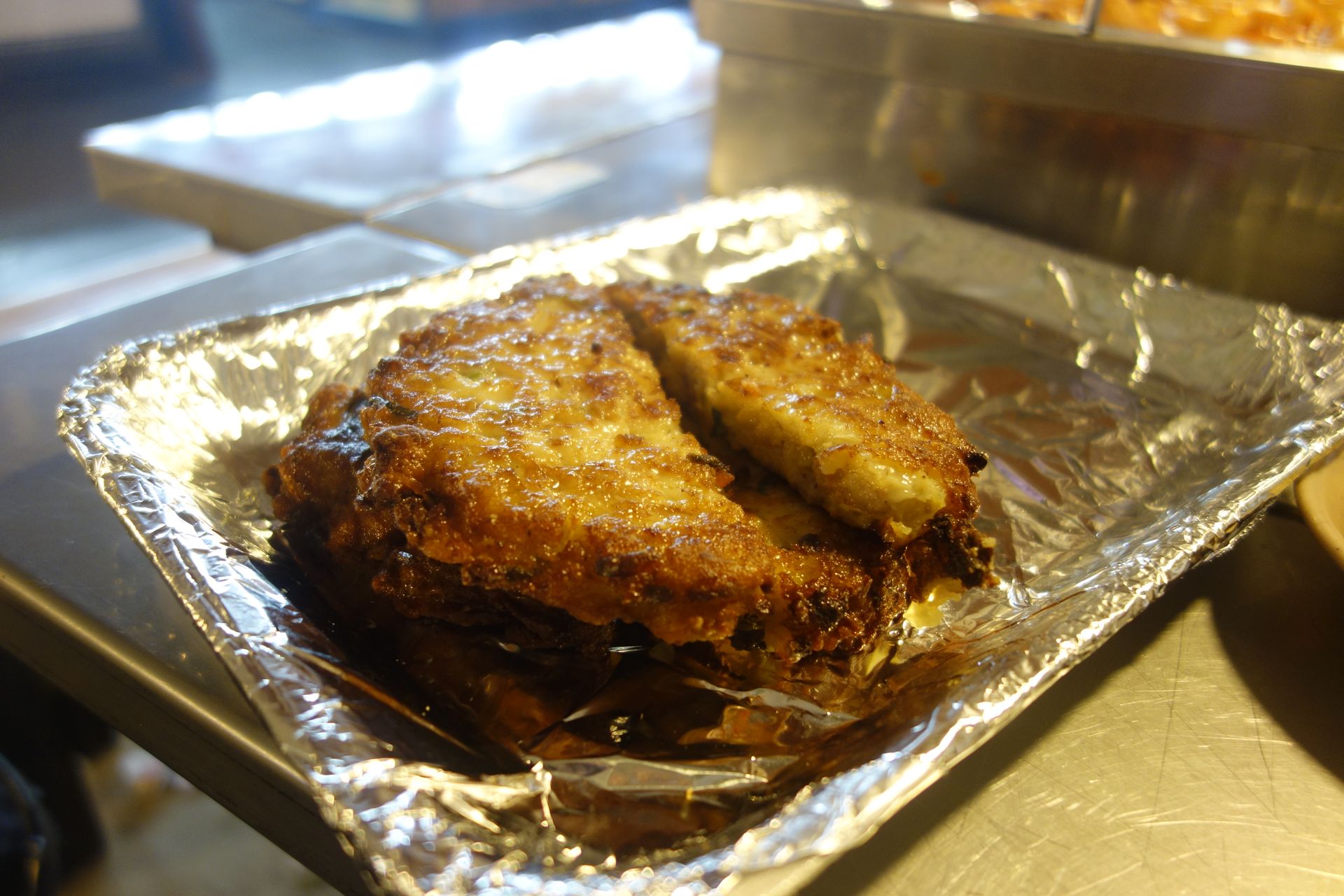
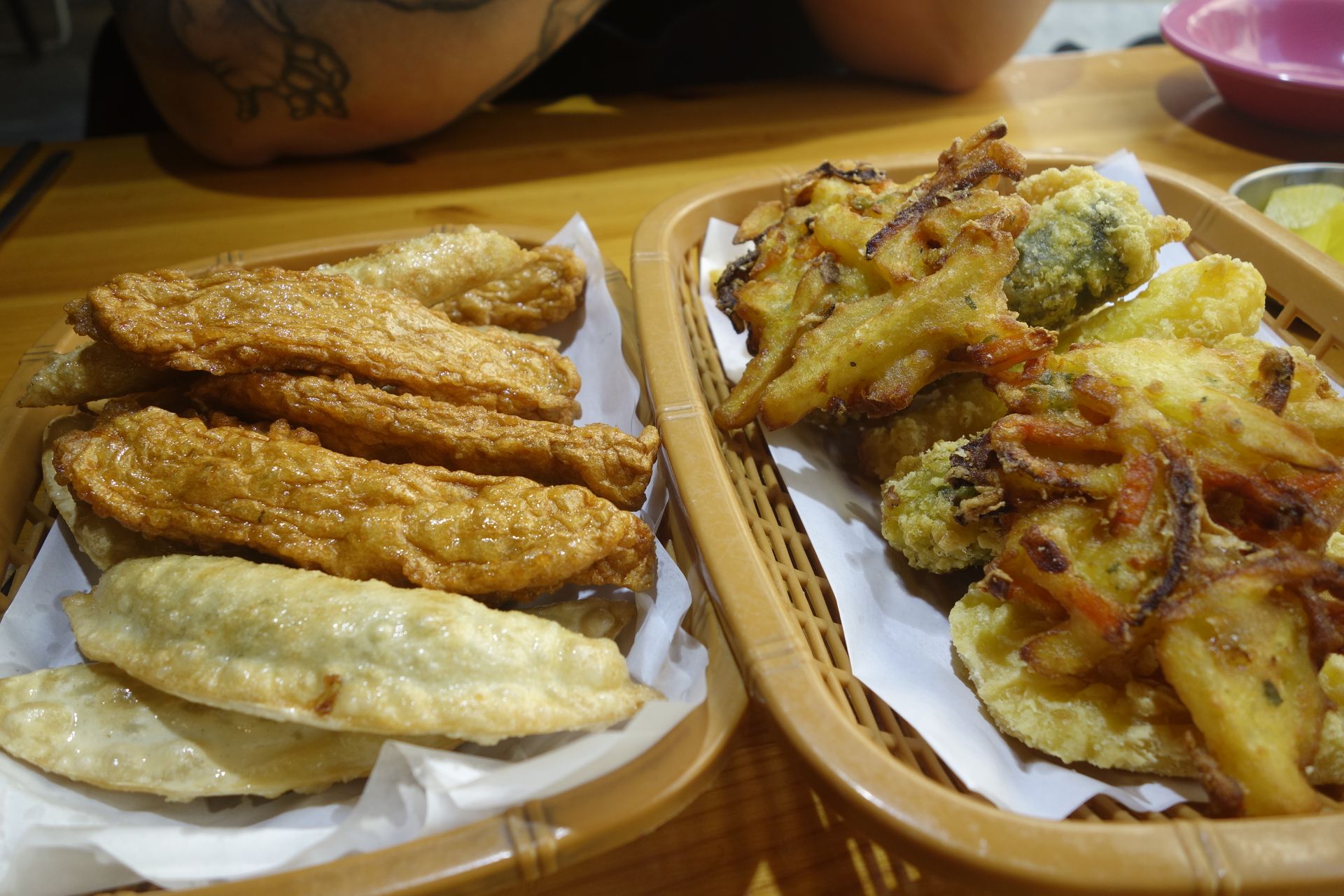
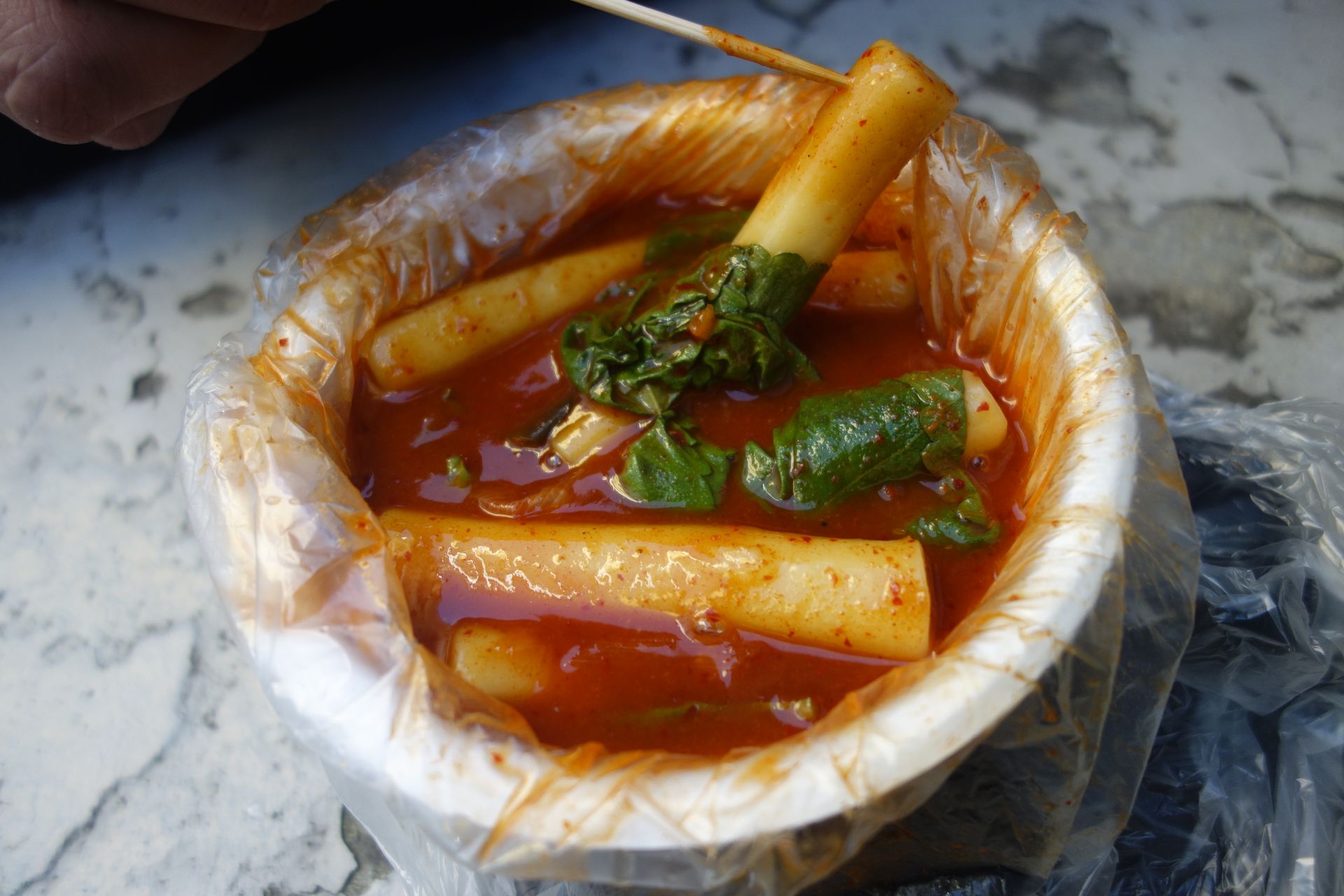

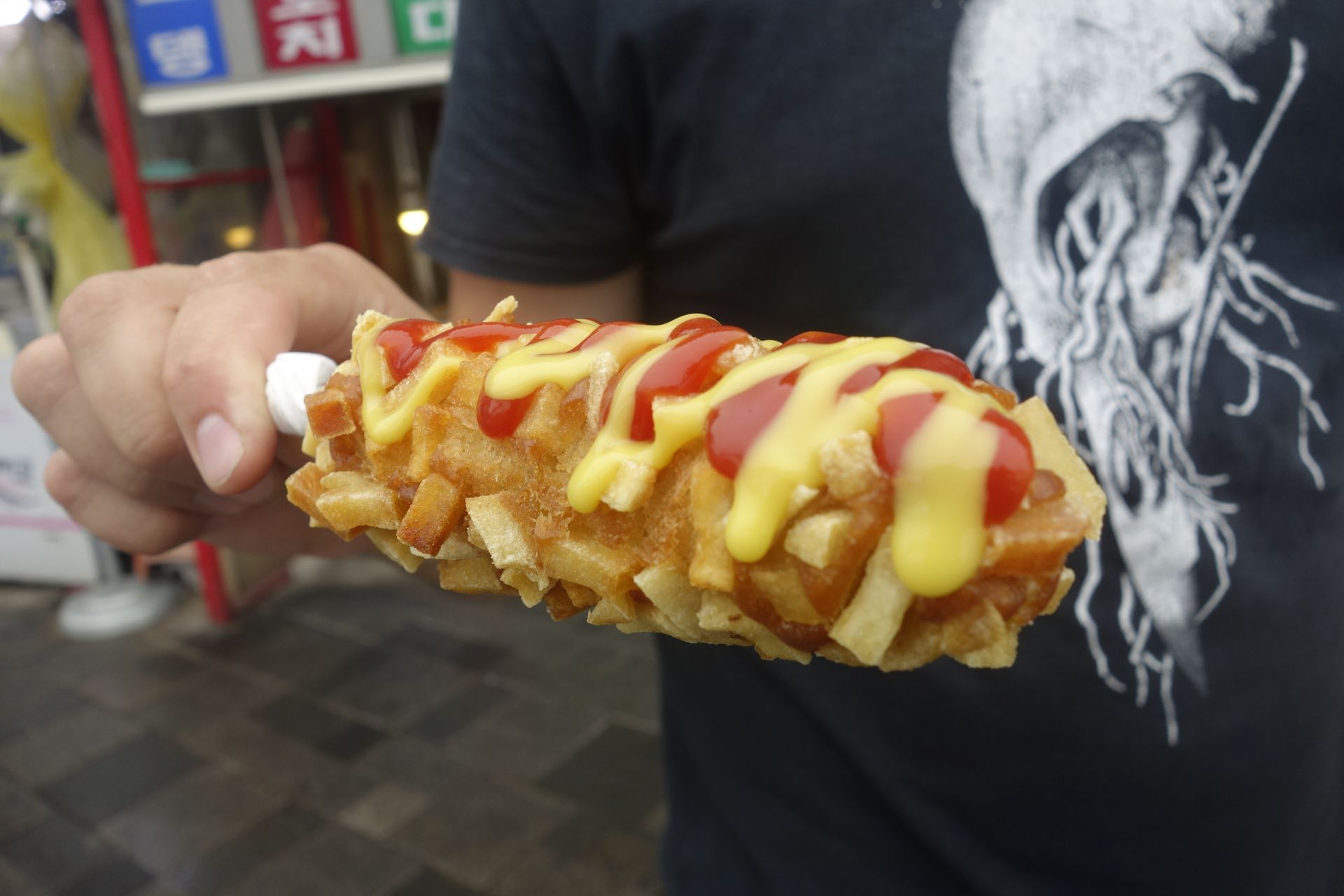



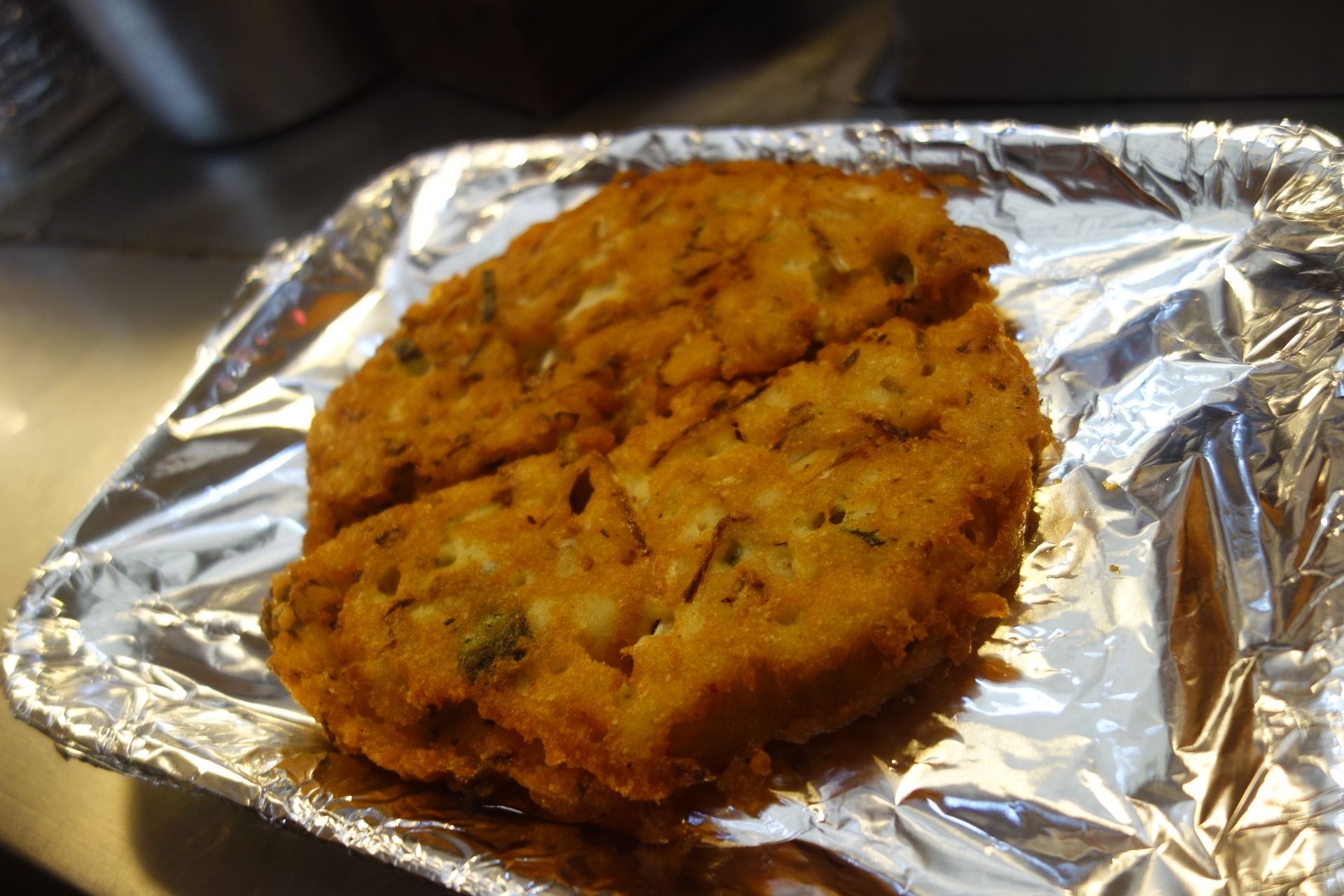

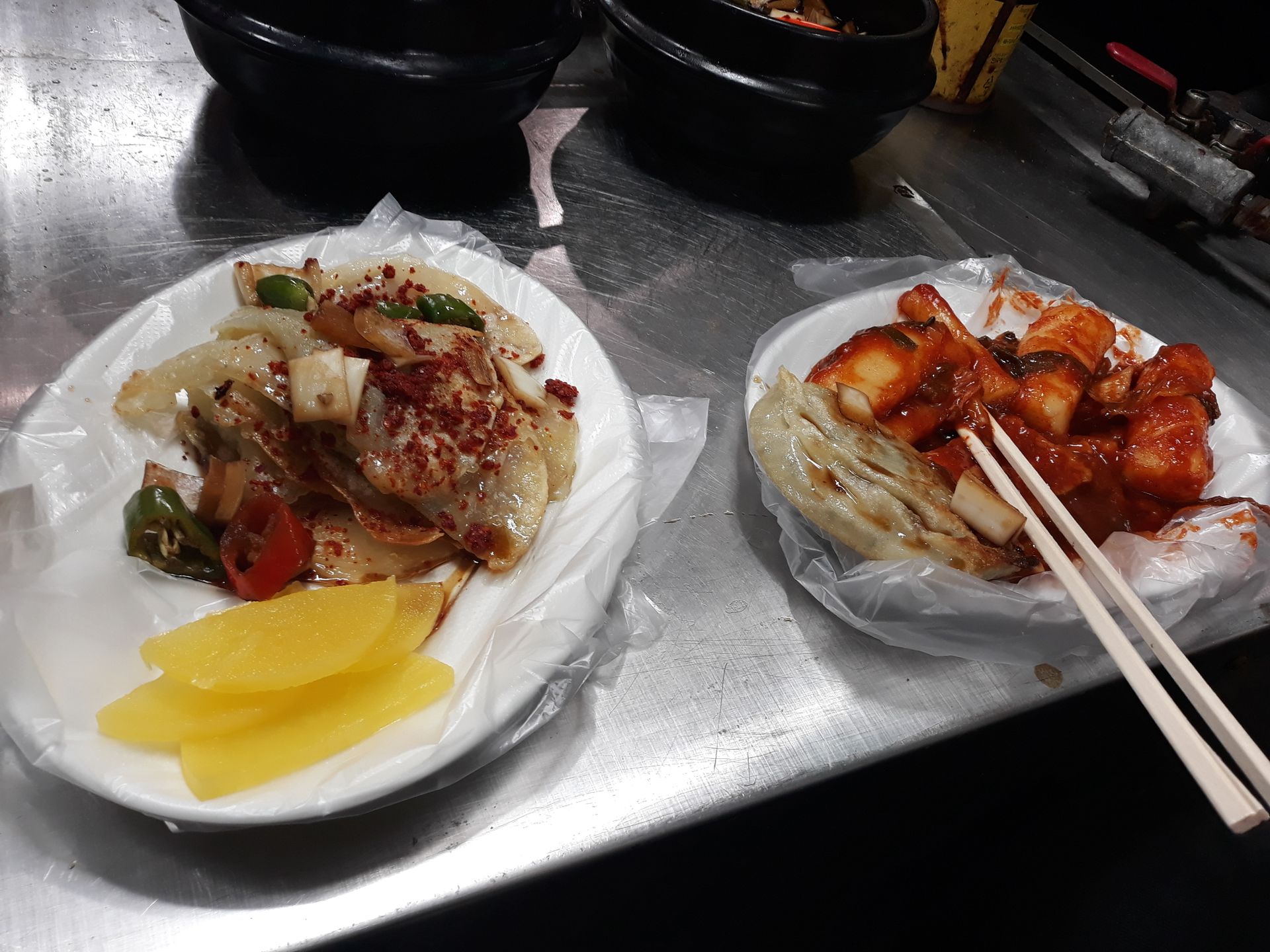
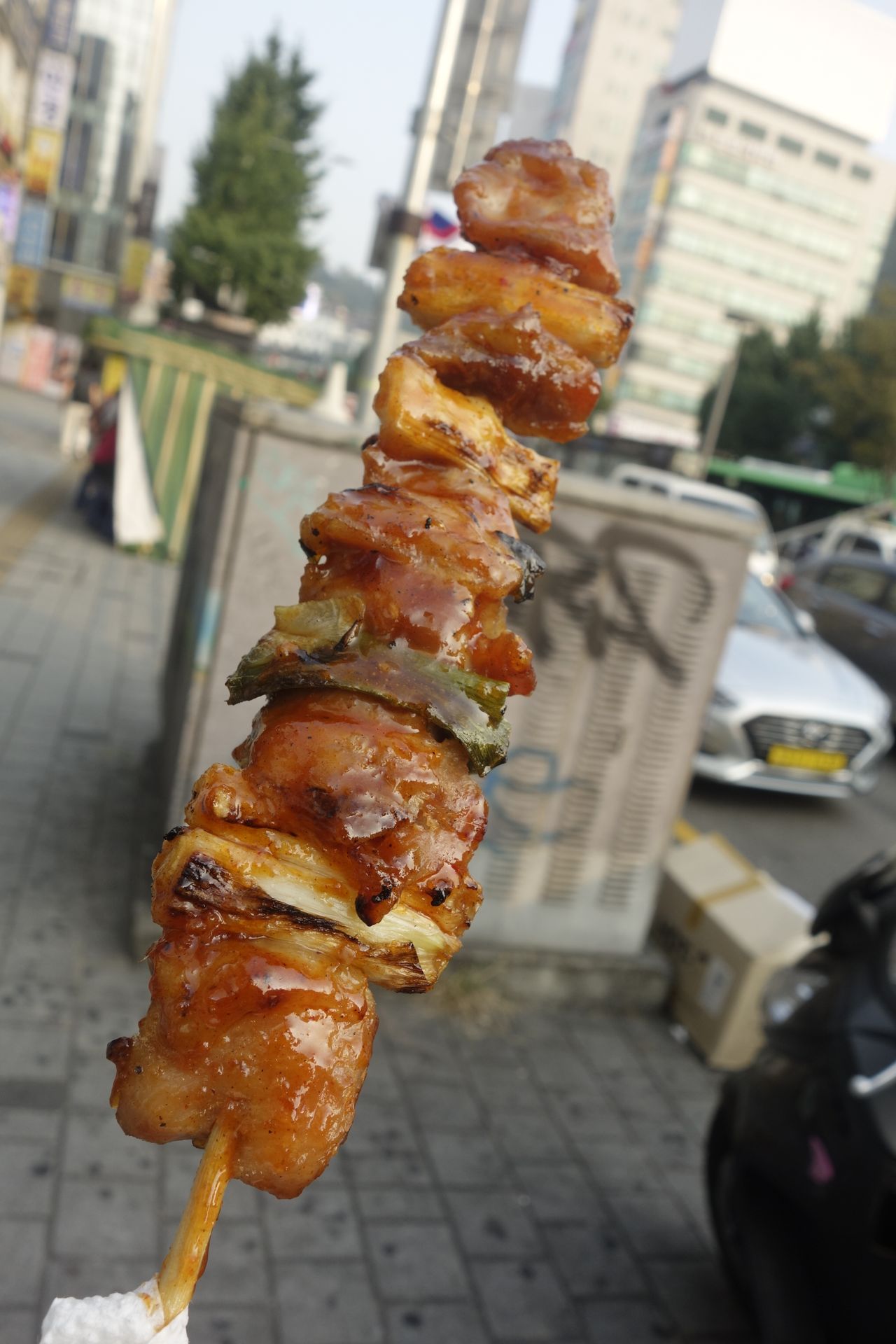
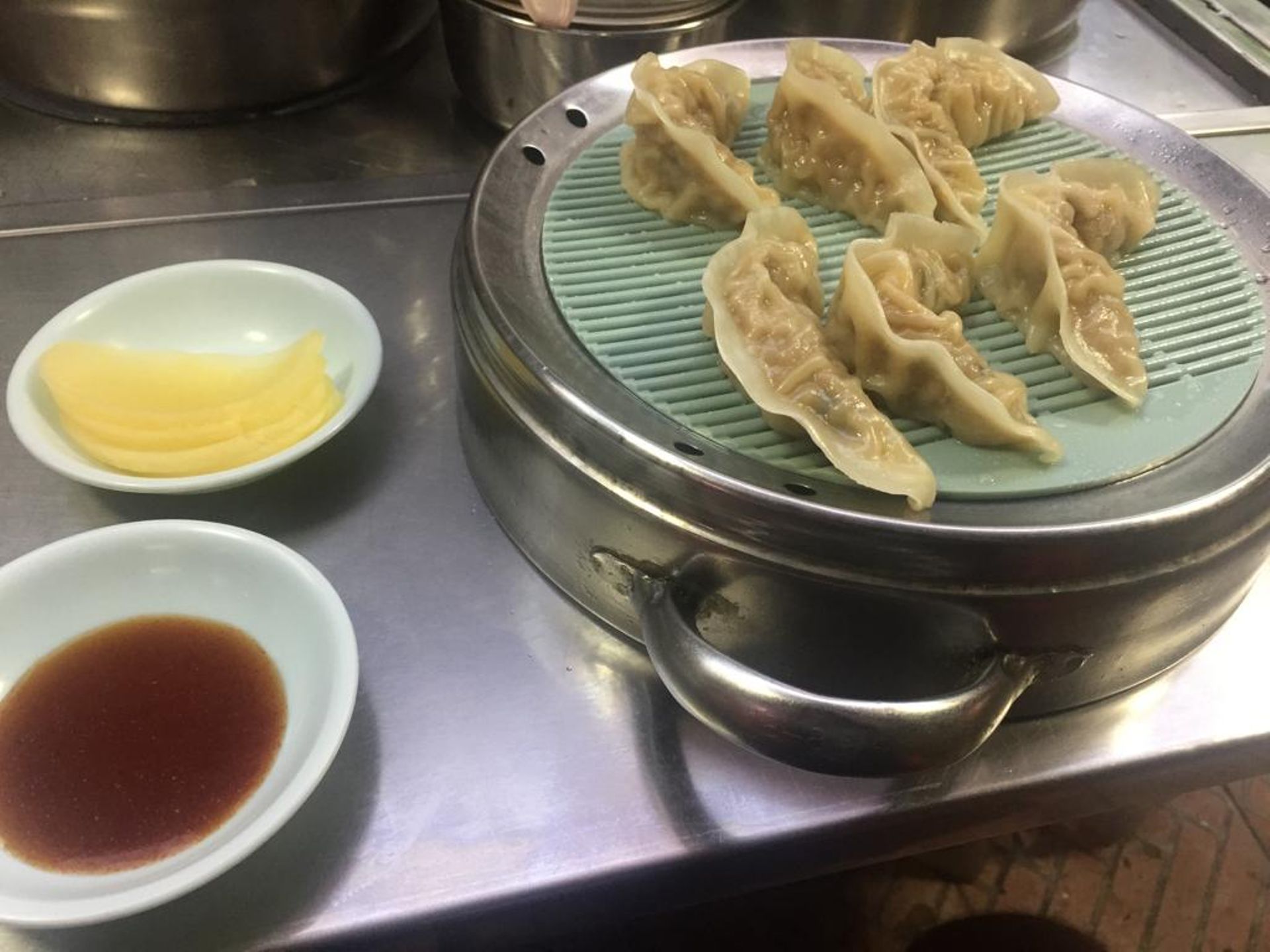

There is also something to say about Korean sweets, but probably most of you are not reading anymore, so let's leave it at the photos.
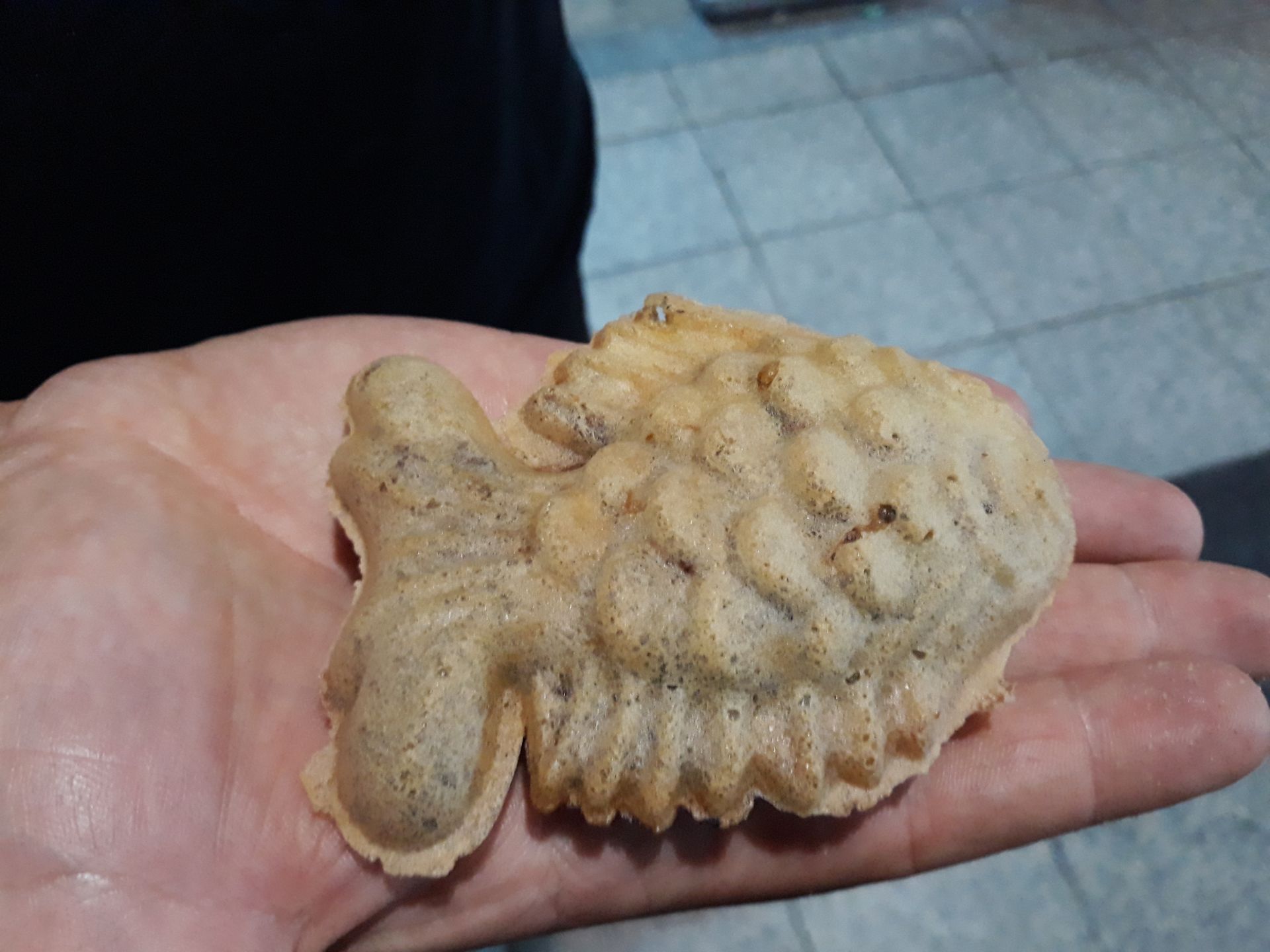

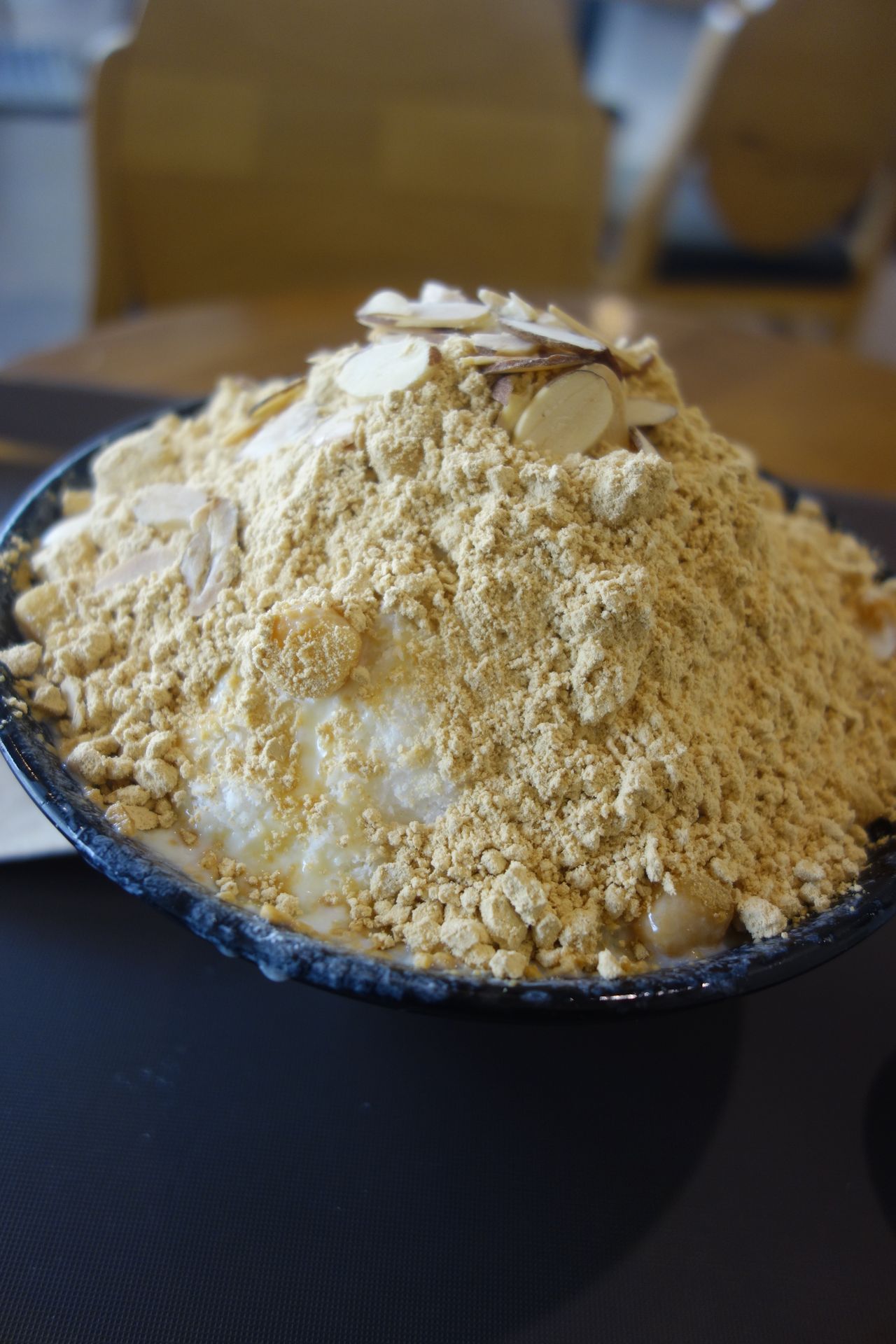


So, we hope we have given you an approximate picture of Korean cuisine, which is definitely unique, and we will surely miss it soon!
Misoratra anarana amin'ny Newsletter
Valio

Tatitra momba ny dia Korea Atsimo
